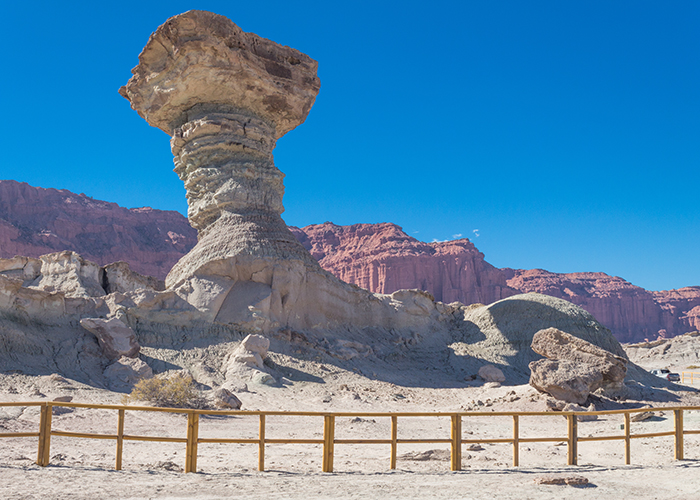 Previous Day |
Patquía → Talampaya National Park → Patqúia 303.2 mi (488.0 km) |
 Next Day |
!Nos ponemos en camino, todos!
I’ve scheduled a tour of UNESCO-protected Talampaya National Park for this morning at 9:00, so I’m up super early and westbound for a beautiful sunrise and hopefully a neat desert tour!
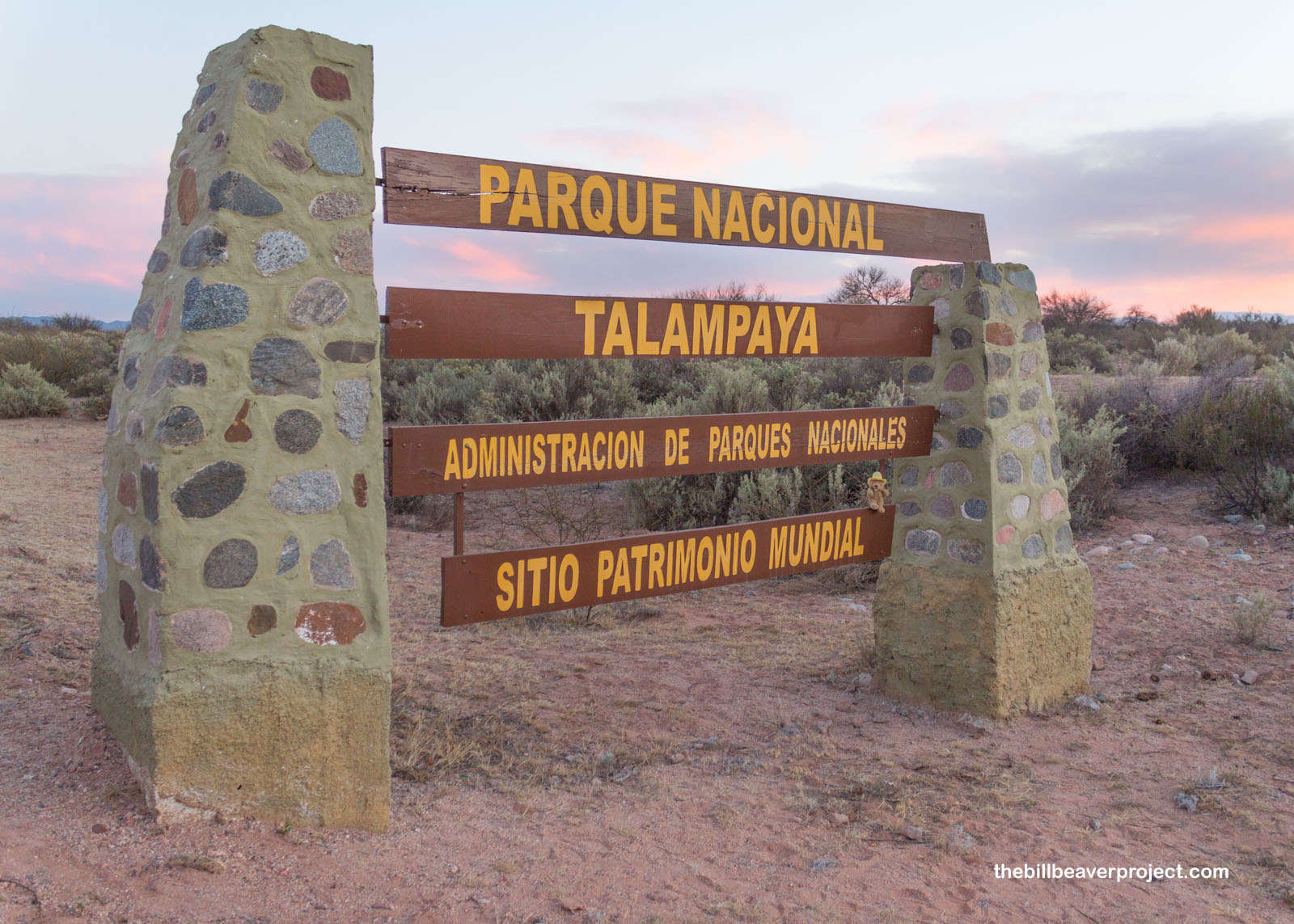 |
An hour and a half later, I pulled into the parking lot at 8:45, ready to jump on the bus, only to learn that my online reservation didn’t count as a ticket! I had to stand a long, slow line and watch my bus depart out the window! Well that didn’t go according to plan. I had a couple of options. I could hang out for two hours until the next tour, or I could squeeze in a tour of a whole different park. Well, you know me by now. I hopped in the car and headed an hour south to Parque Provincial Ischigualasto!
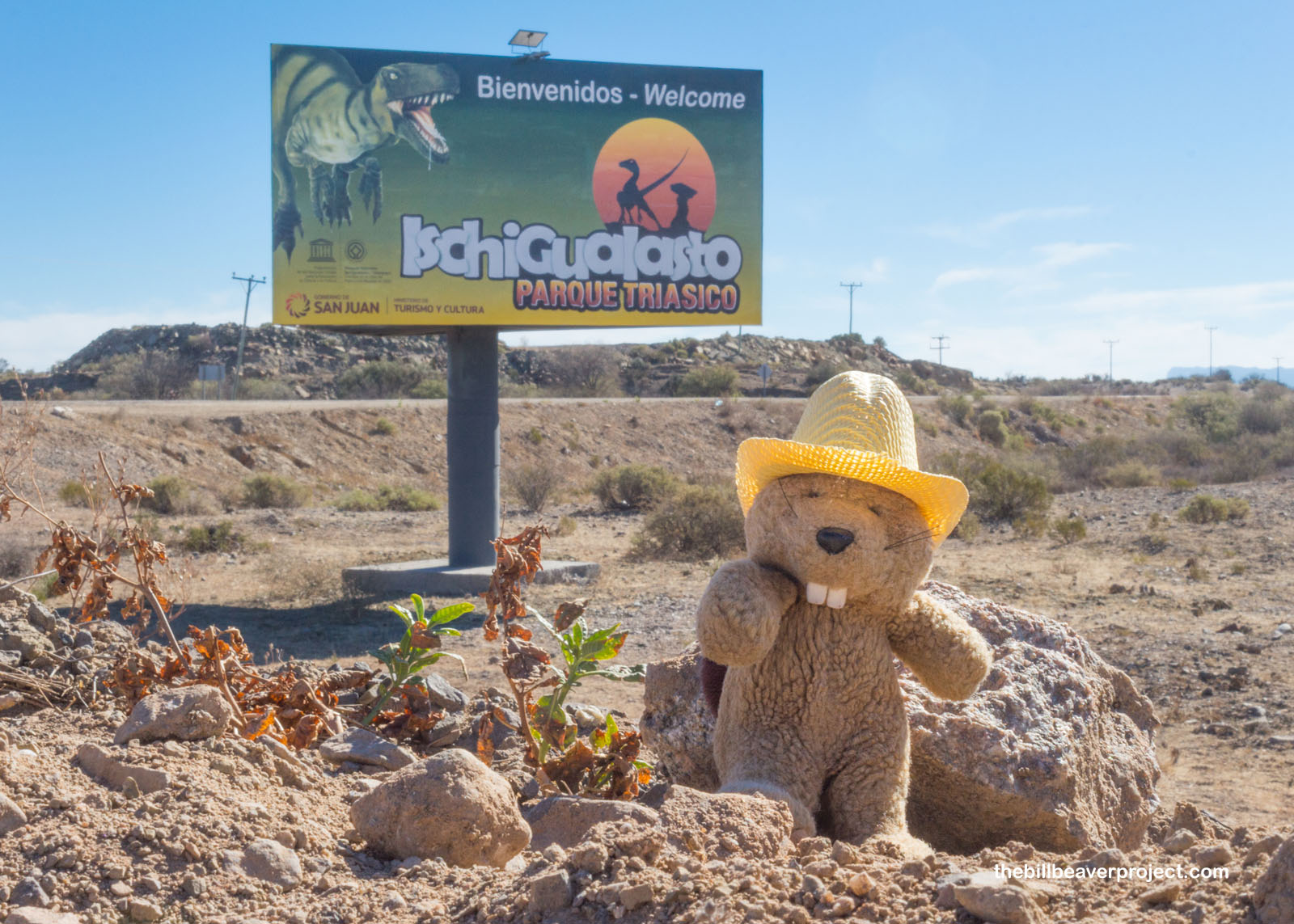 |
I pulled in with a few minutes to spare before the 10:00 tour, which was lucky, because tours are all guided and only leave on the hour! As I sat in my spot in the caravan, a fellow approached my window, asked if I spoke Spanish, and if I could give him a ride because his friends had left him on the 9:00 tour while he was in the bathroom! I wasn’t used to picking up hitch-hikers, but there was only so much danger in the middle of a guided car caravan. I said sure!
En route to our first stop, the Valle Pintado, I got to learn more about Nico Peverelli, the wandering chef, who was traveling around South America, cooking enough to sell before moving on to the next spot! He’s also here to see the eclipse tomorrow, but he’s heading for the town of Iglesias! What a neat adventure!
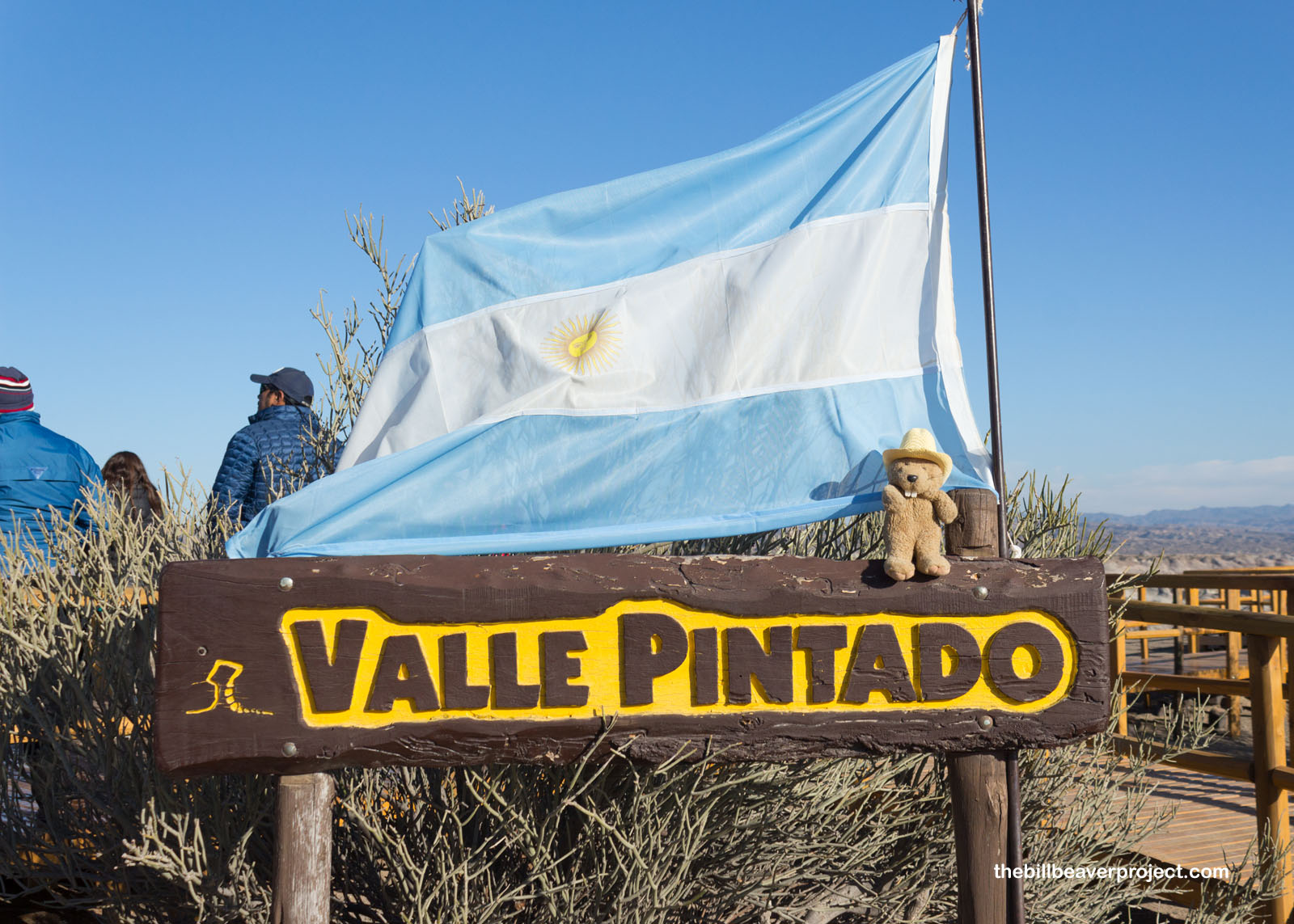 |
The Valle Pintado, our guide explained in Spanish, is a malpais or badlands, left over from the Triassic Period! As I looked out over the valley, I was really surprised at just how much it resembled southern Utah! It’s so strange to find a familiar place where you’ve never been before! I also couldn’t help but notice a funny plant on the edge of the cliff called a pus pus, which apparently has been used for centuries for its antibacterial, antifungal, anti-inflammatory, and anti-tumor properties!
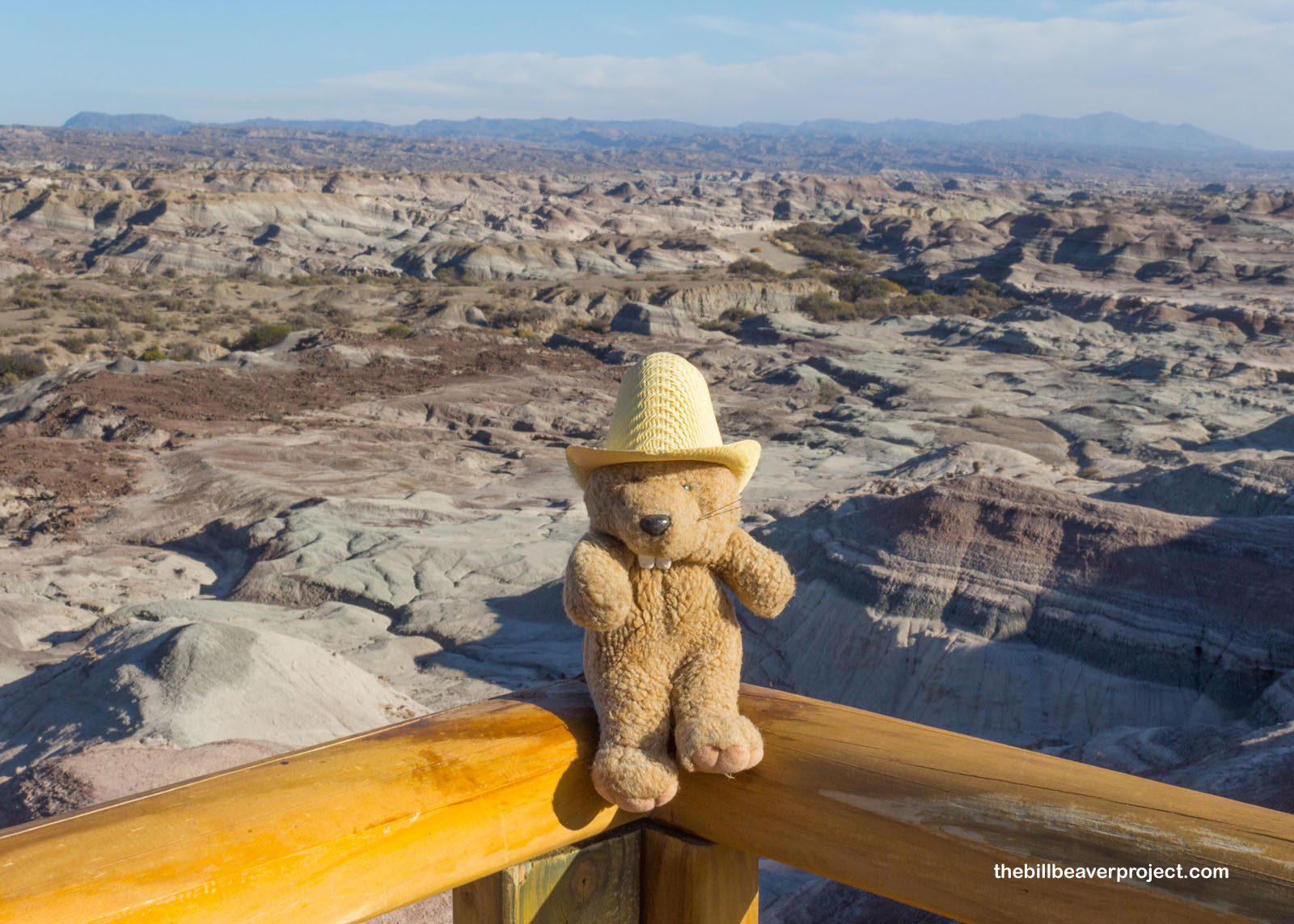 |
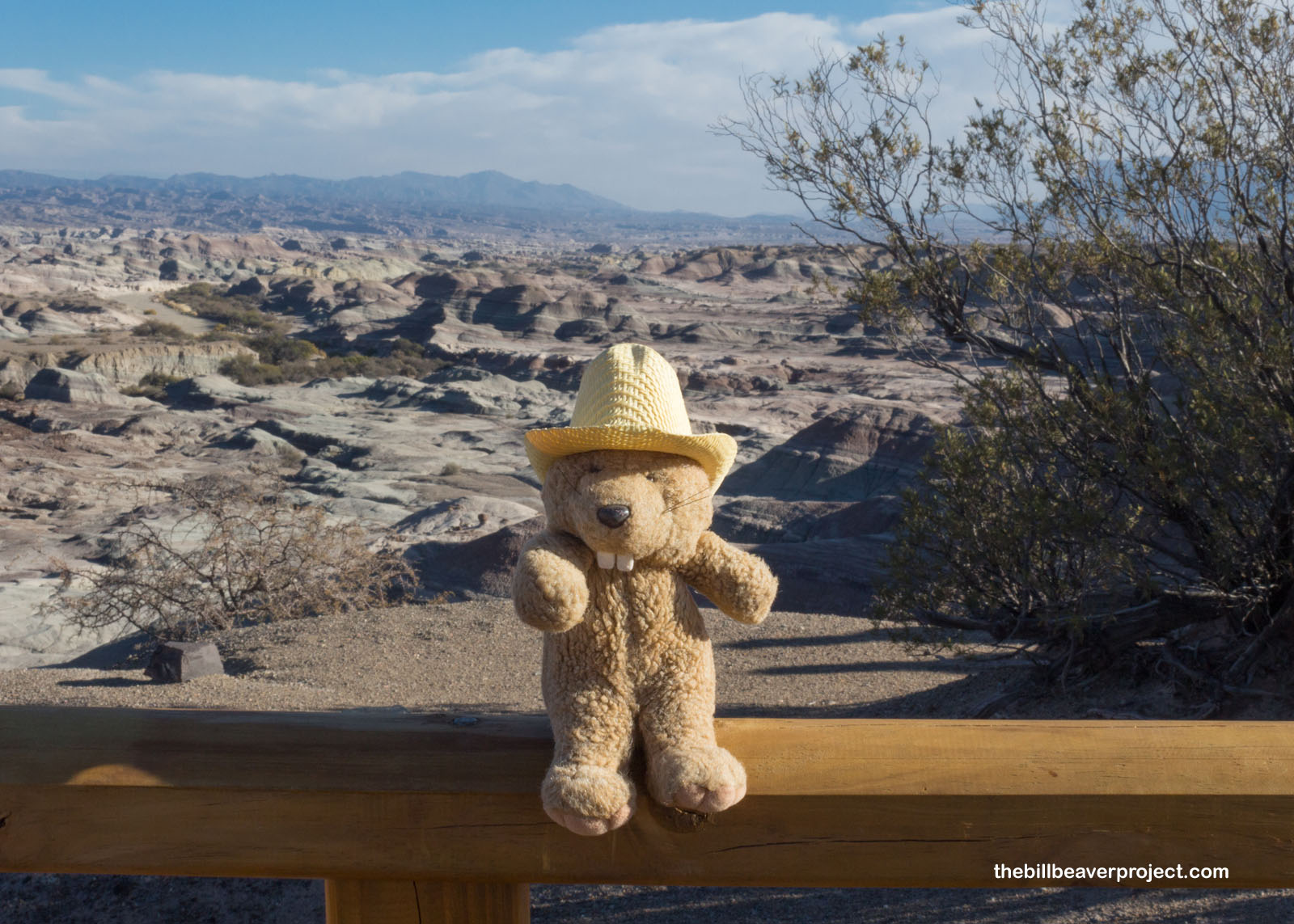 |
At the next stop on the Traditional Day Circuit, we viewed a huge rock formation called the Sphinx and learned how this area came to be called the Valley of the Moon! The name Ischigualasto, “place where the moon alights,” is one of the last surviving words of the Kakán language spoken by the Diaguita people! Walking the boardwalk over gray boulders and craters, I could definitely see how they made that comparison!
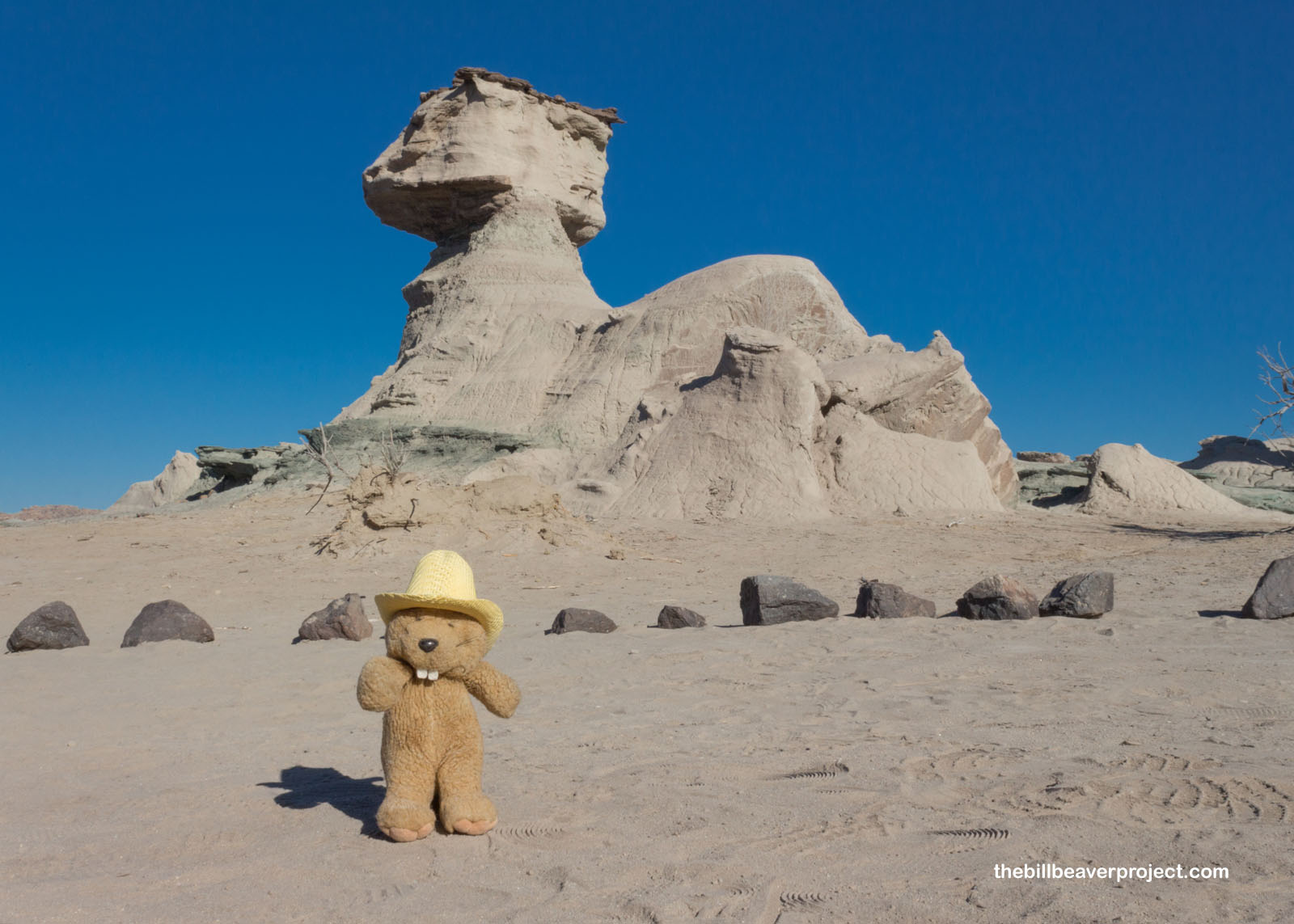 |
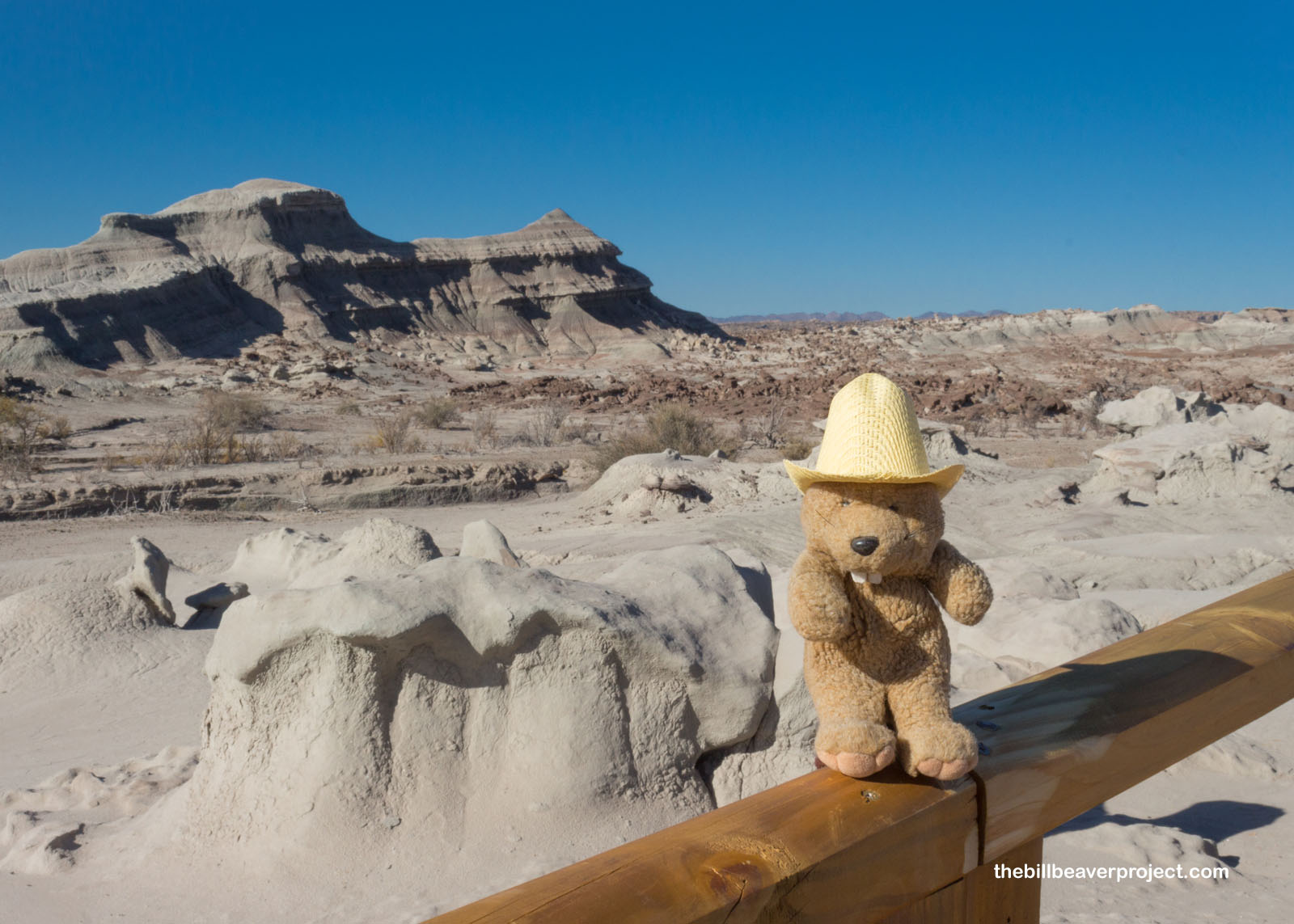 |
At the end of the boardwalk, we looked out on one of Ischigualasto’s main attractions: the Cancha de Bochas, or bocce ball field! Here, we saw dozens of ball-shaped rock concretions, which formed when mineral cement collected around a nucleus, like a shell or pebble, then eroded out of softer bedrock over the millennia! These rock balls may have been brought together by water, but there’s still a lot of mystery surrounding them!
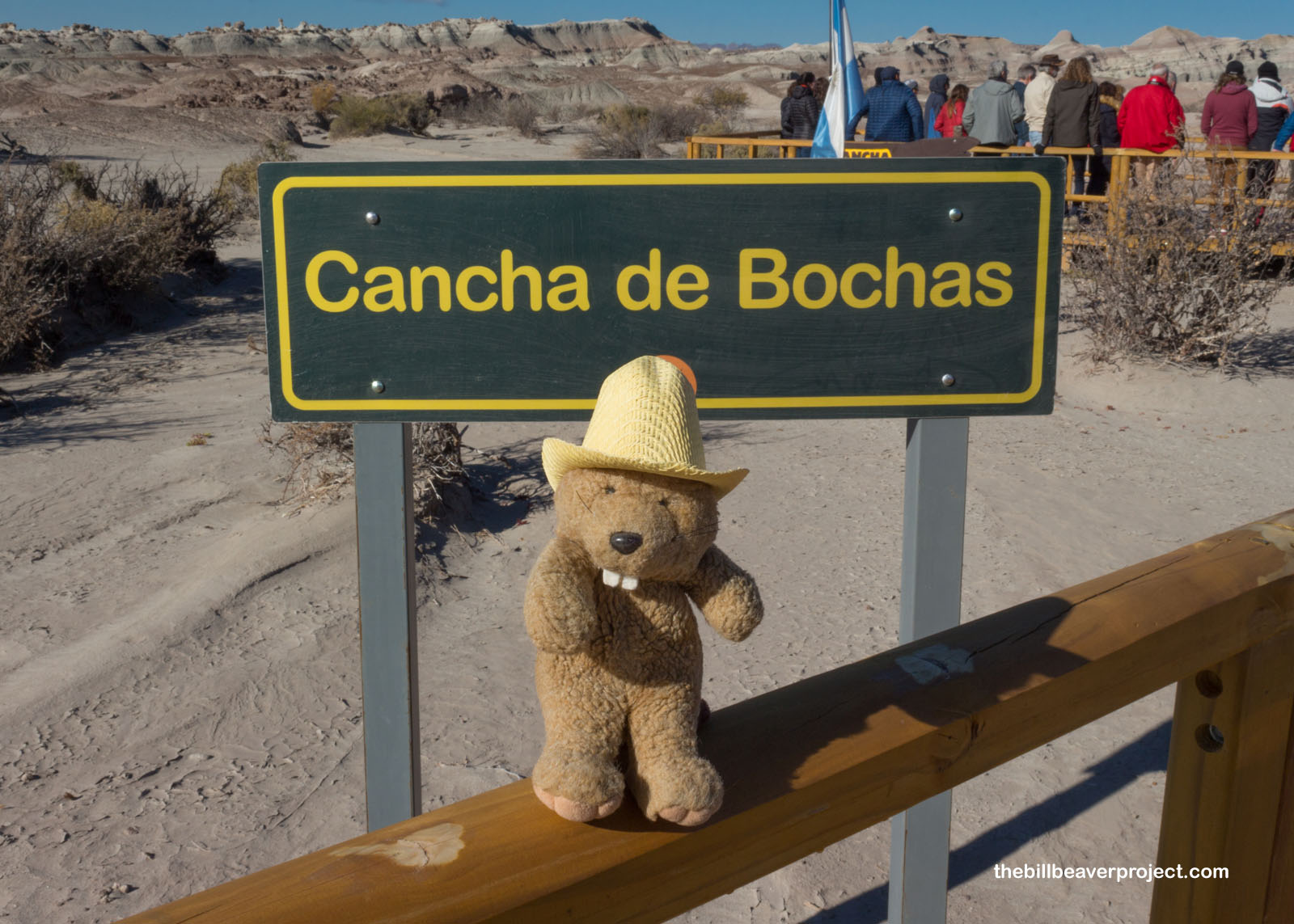 |
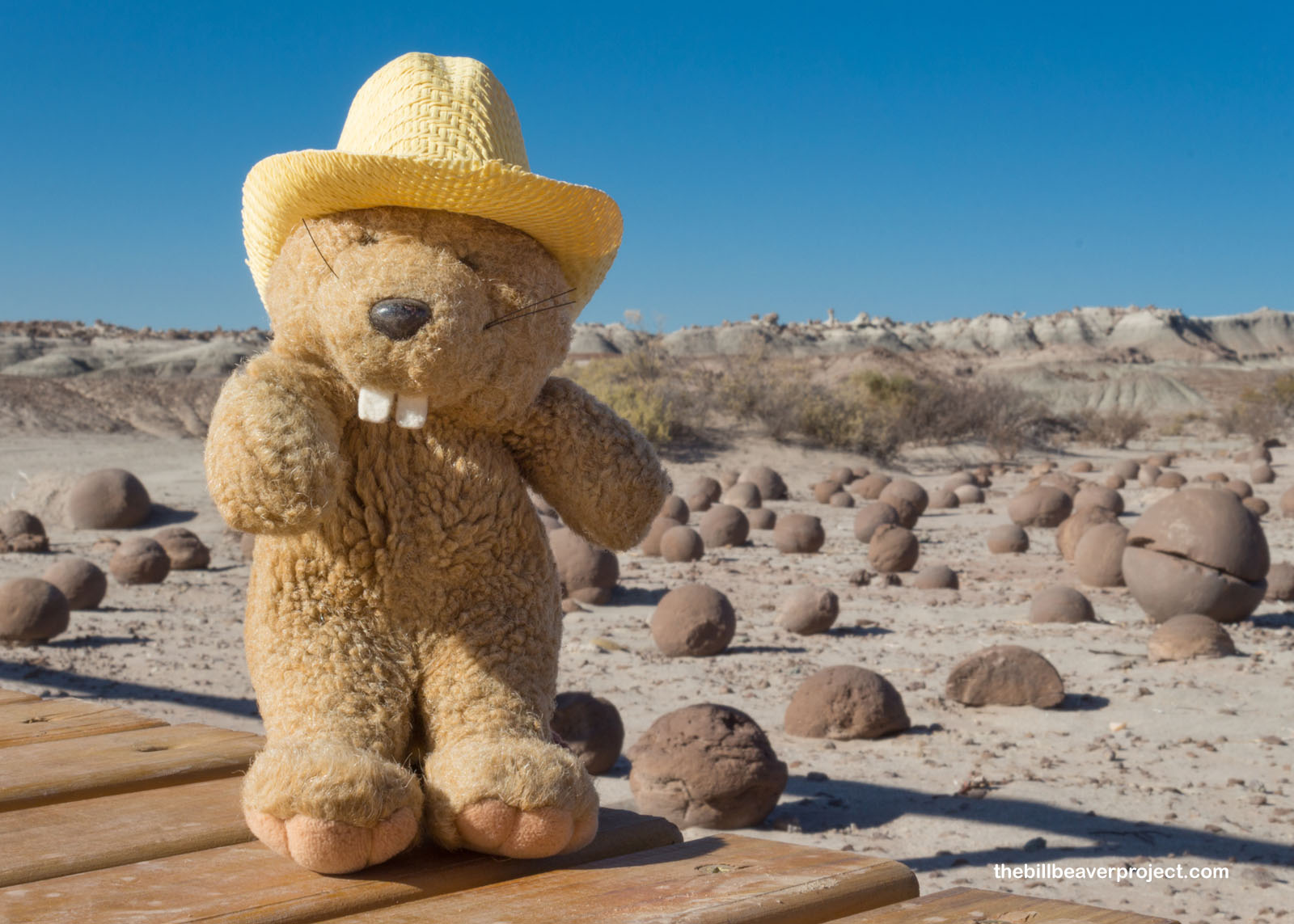 |
Next, we took a break at the Museo de William Sill, named for the lead paleontologist at Ischigualasto, who not only drew worldwide attention to the rich fossil deposits here but also, it turns out, secretly helped his students leave Argentina before they “disappeared” under the dictatorship of the 1970s!
Inside, a docent showed us the fossils of two Triassic reptiles, Scaphonyx and Ischigualastia, still in bedrock! Lots of different species have been found here at Ischigualasto, including seven of the oldest known species of dinosaur and 21 other reptile species!
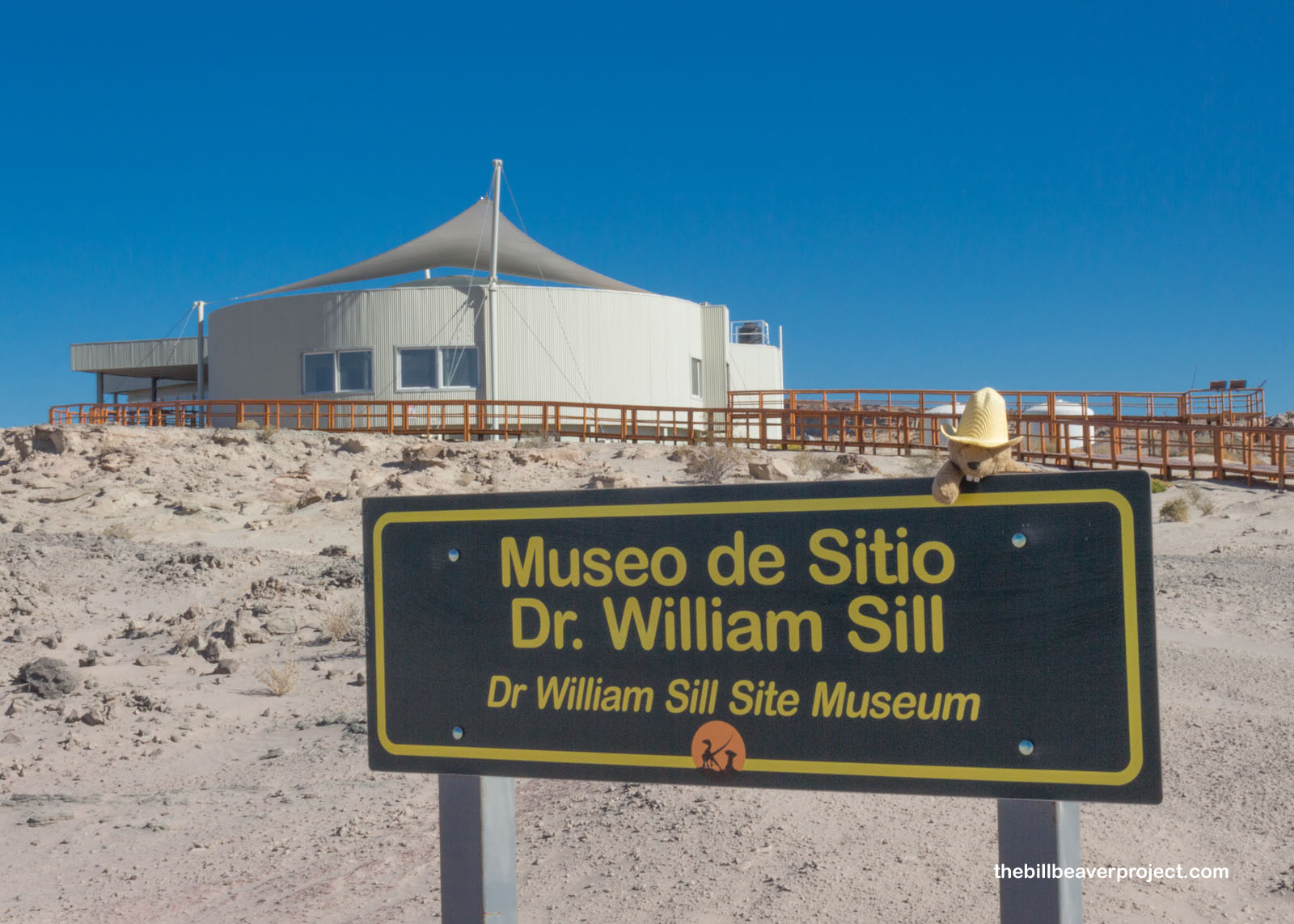 |
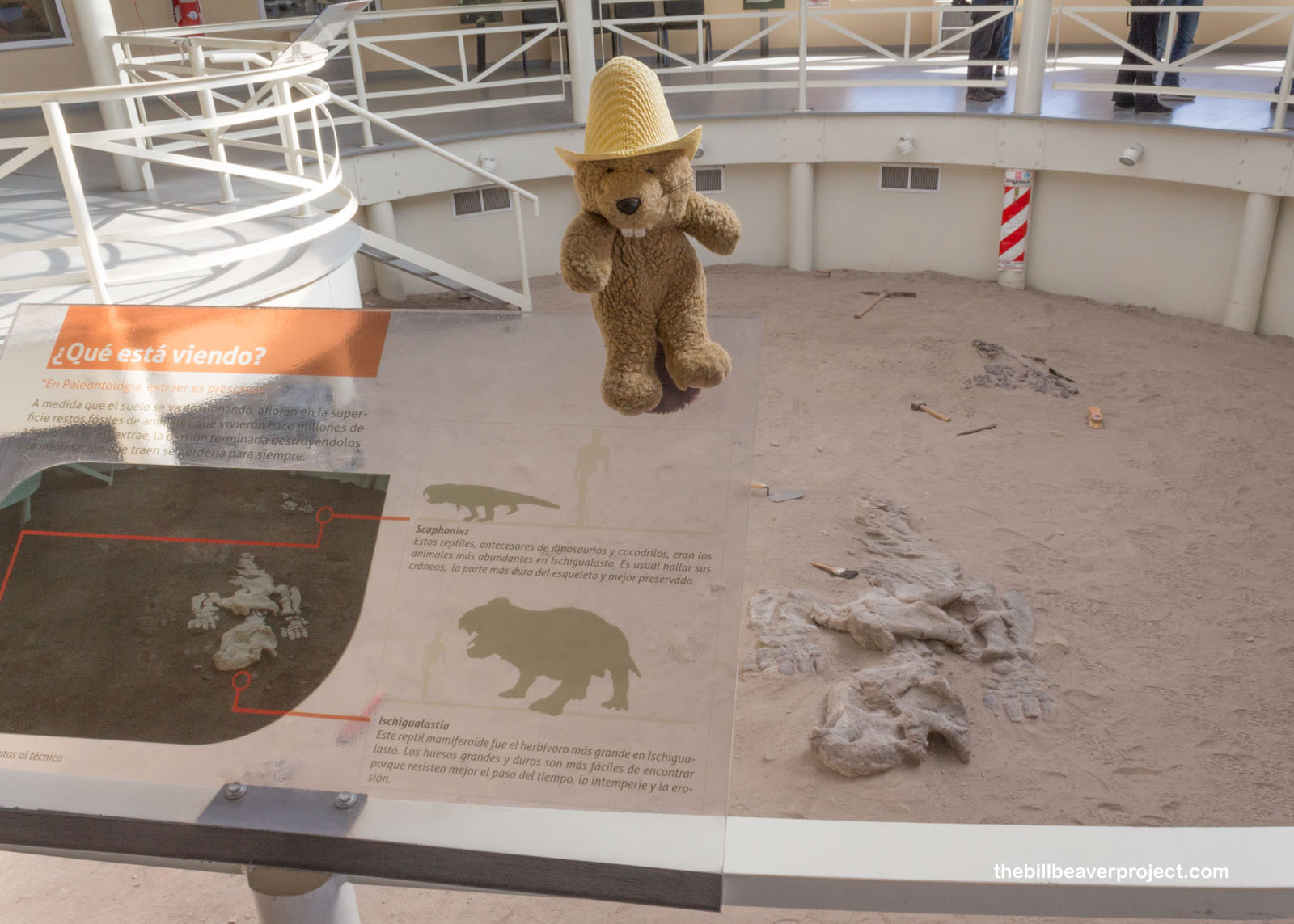 |
After sharing some soup with Nico and watching a huge Andean condor circle overhead, we got back in the caravan and continued to our last two stops on the tour, starting with a huge eroded rock formation called The Submarine!
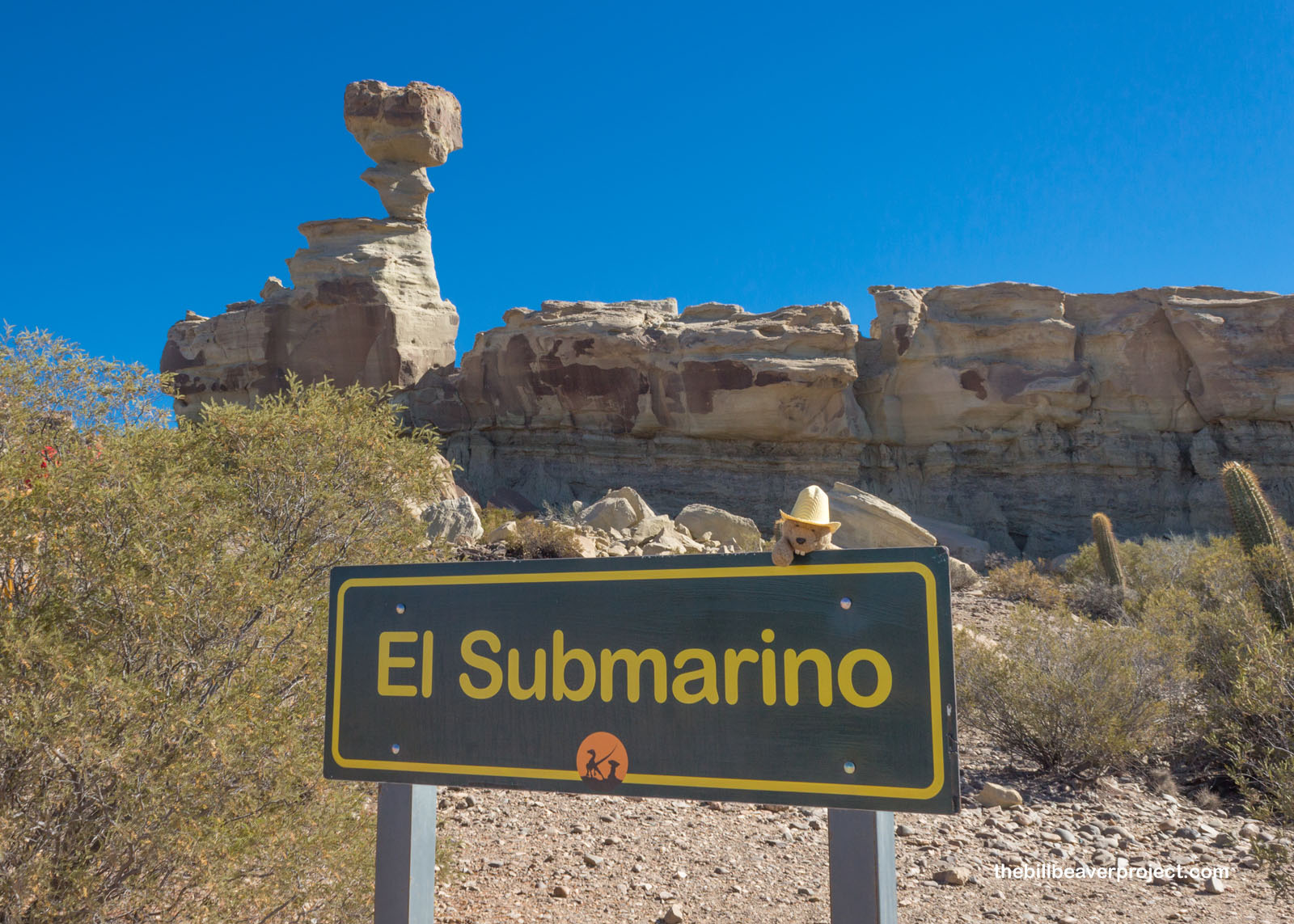 |
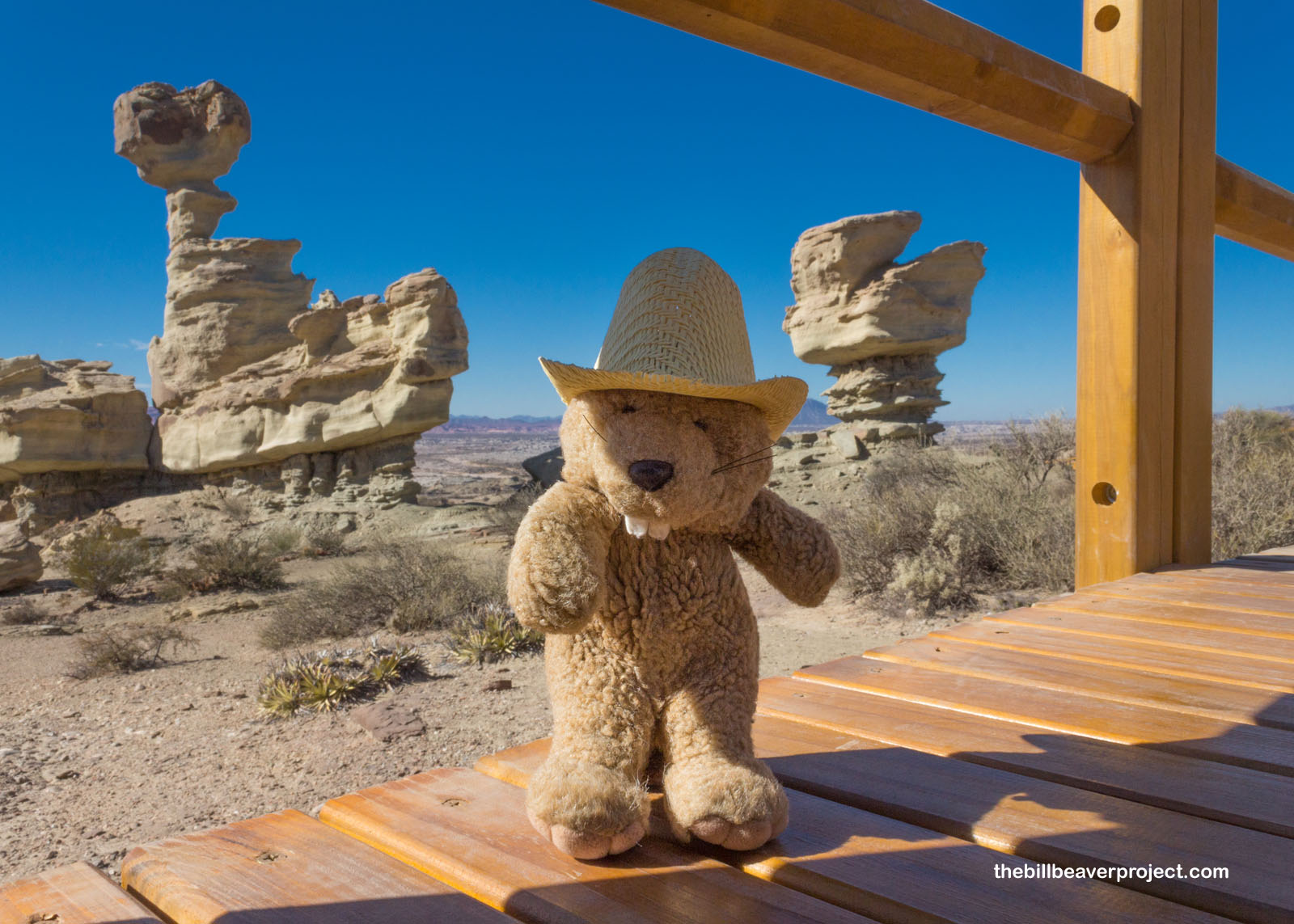 |
The tour concluded in front of Ischigualasto’s most famous formation, known as El Hongo, or The Mushroom! Like the mushroom rocks of Wadi Rum and Chiricahua National Monument, this towering feature was made by centuries of wind erosion! Here, our guide left us, pointing out the red cliffs in the background that marked the boundary between San Juan and La Rioja Province!
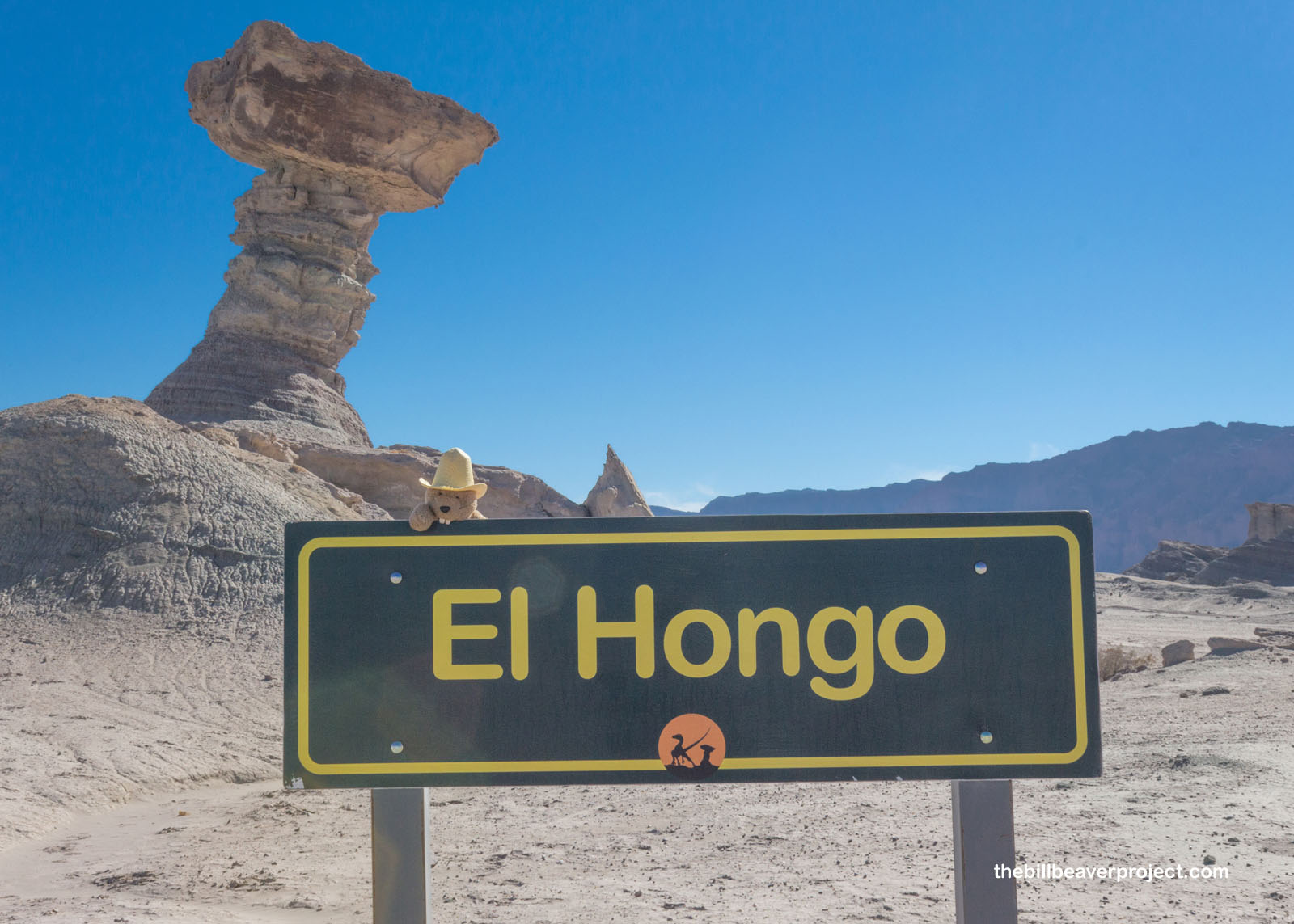 |
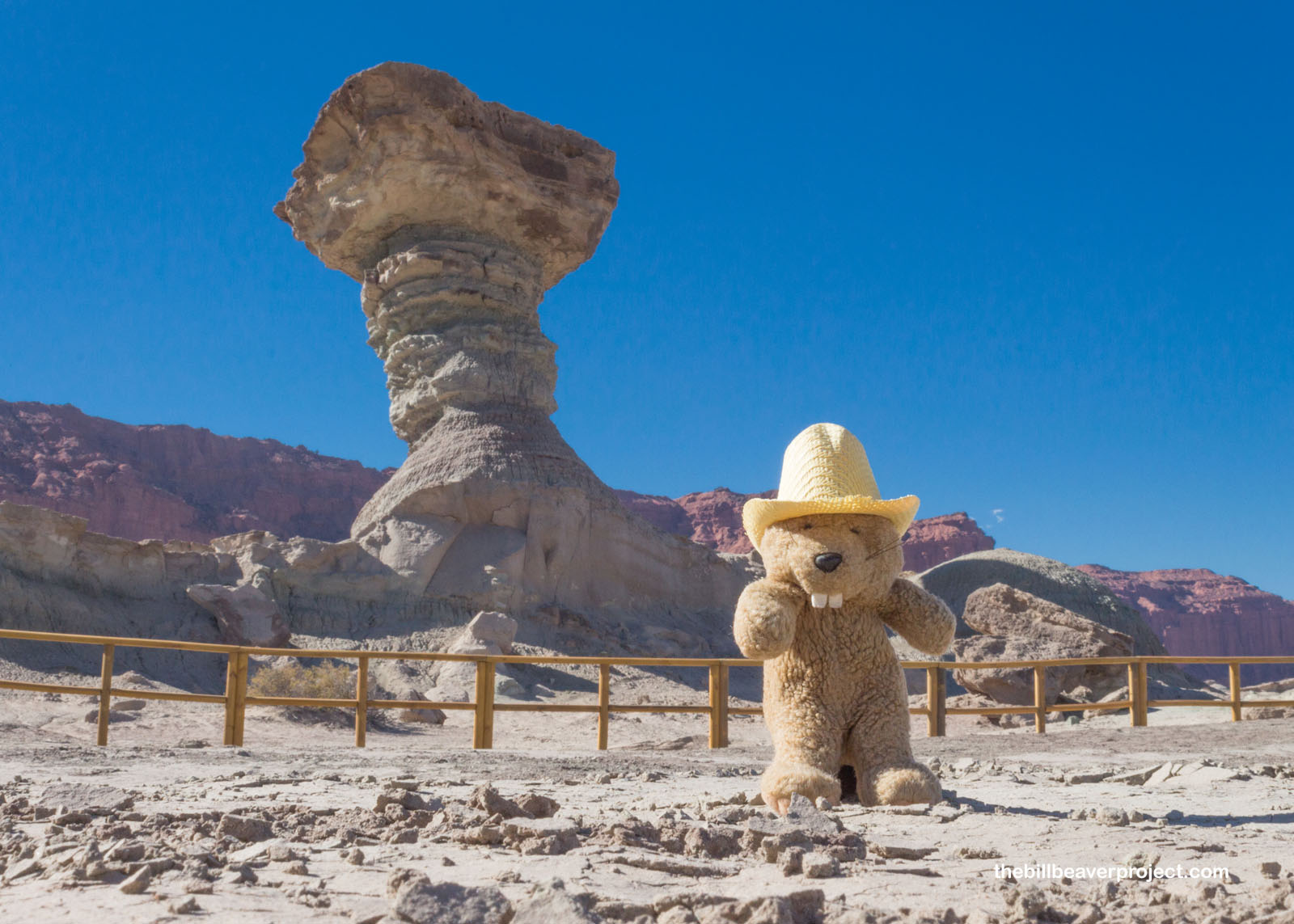 |
We were left to finish the circuit on our own, and pulled up at the Visitor Center parking lot for a much needed bathroom stop. Nico met up with his friends who still had his backpack, and after wishing him safe journeys, I was on my way back to Talampaya for the 4:00 tour! I stocked up on empanadas at the cafe before checking out the Triassic Park and meeting some of the dinosaurs that make this place such a rich paleontological find!
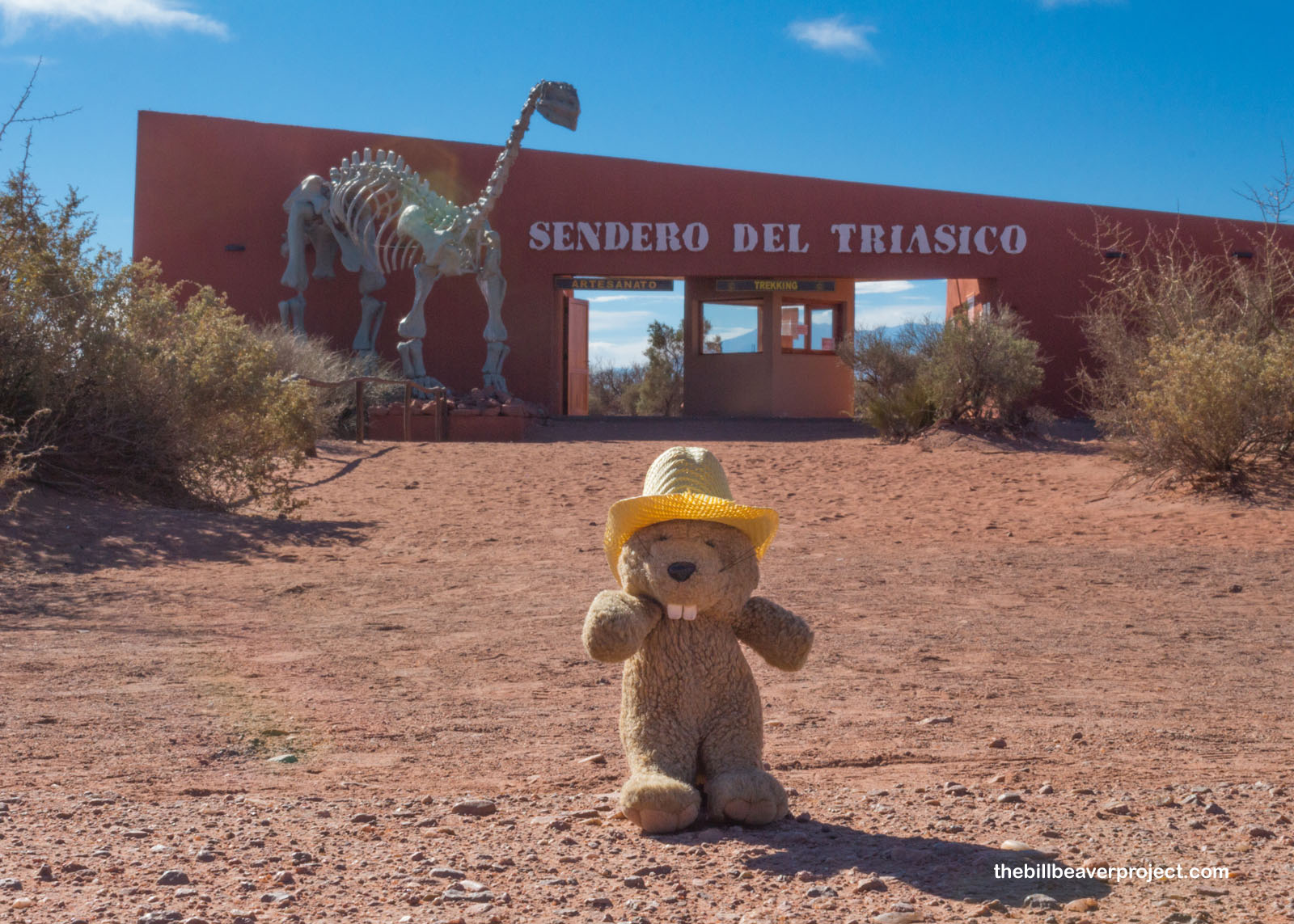 |
Right at the entrance was a Zupaysaurus, reconstructed to the best estimates, because only a skull, right shoulder girdle, lower right leg and ankle, and twelve vertebrae have ever been found. It’s estimated that this early predator got to be 13 to 17 feet long!
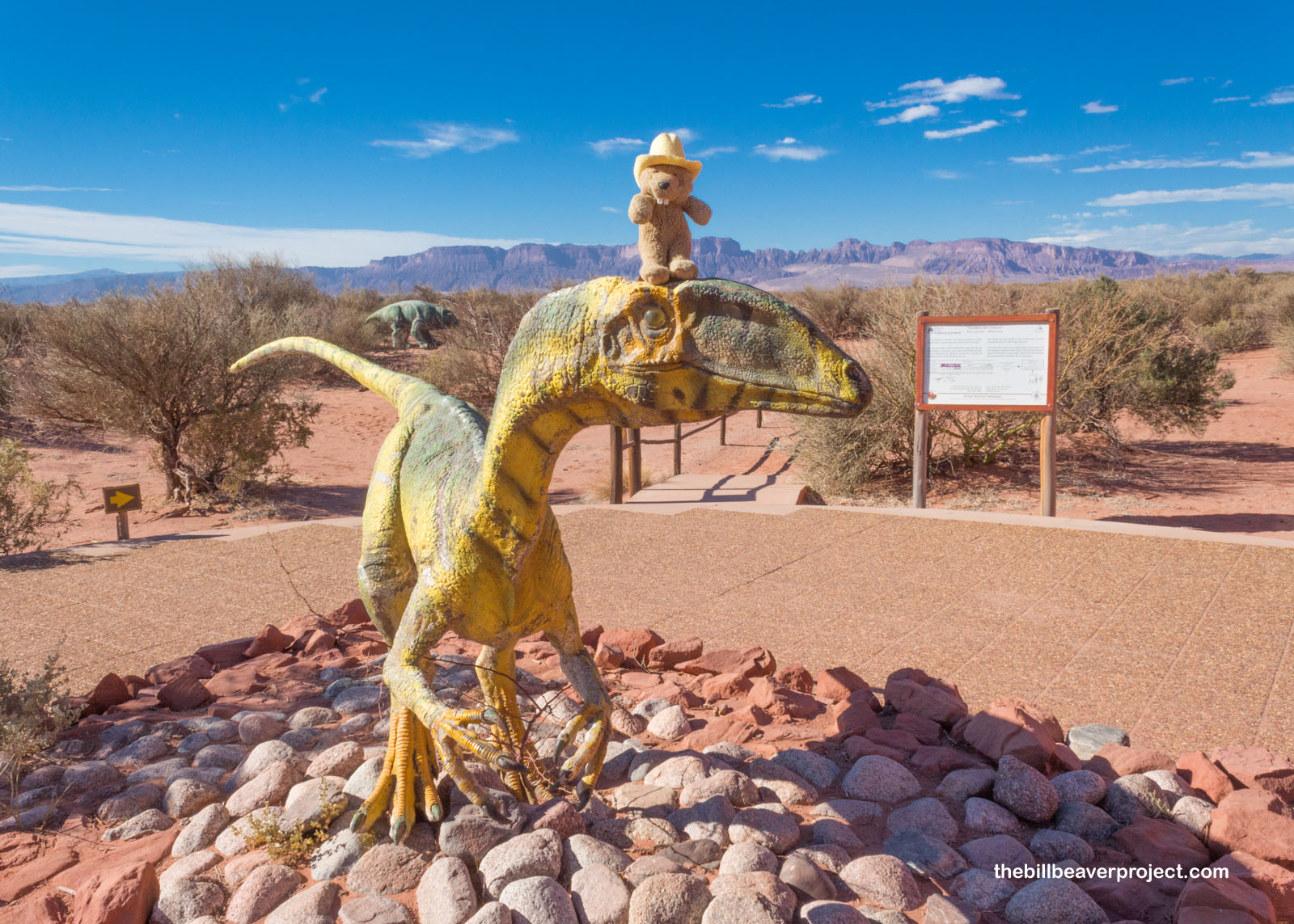 |
At the next stop, a poor Dinodontosaurus was being eaten by a pack of tiny Marasuchus! That was scary enough, but nowhere near as scary as the next crocodile relative on the path!
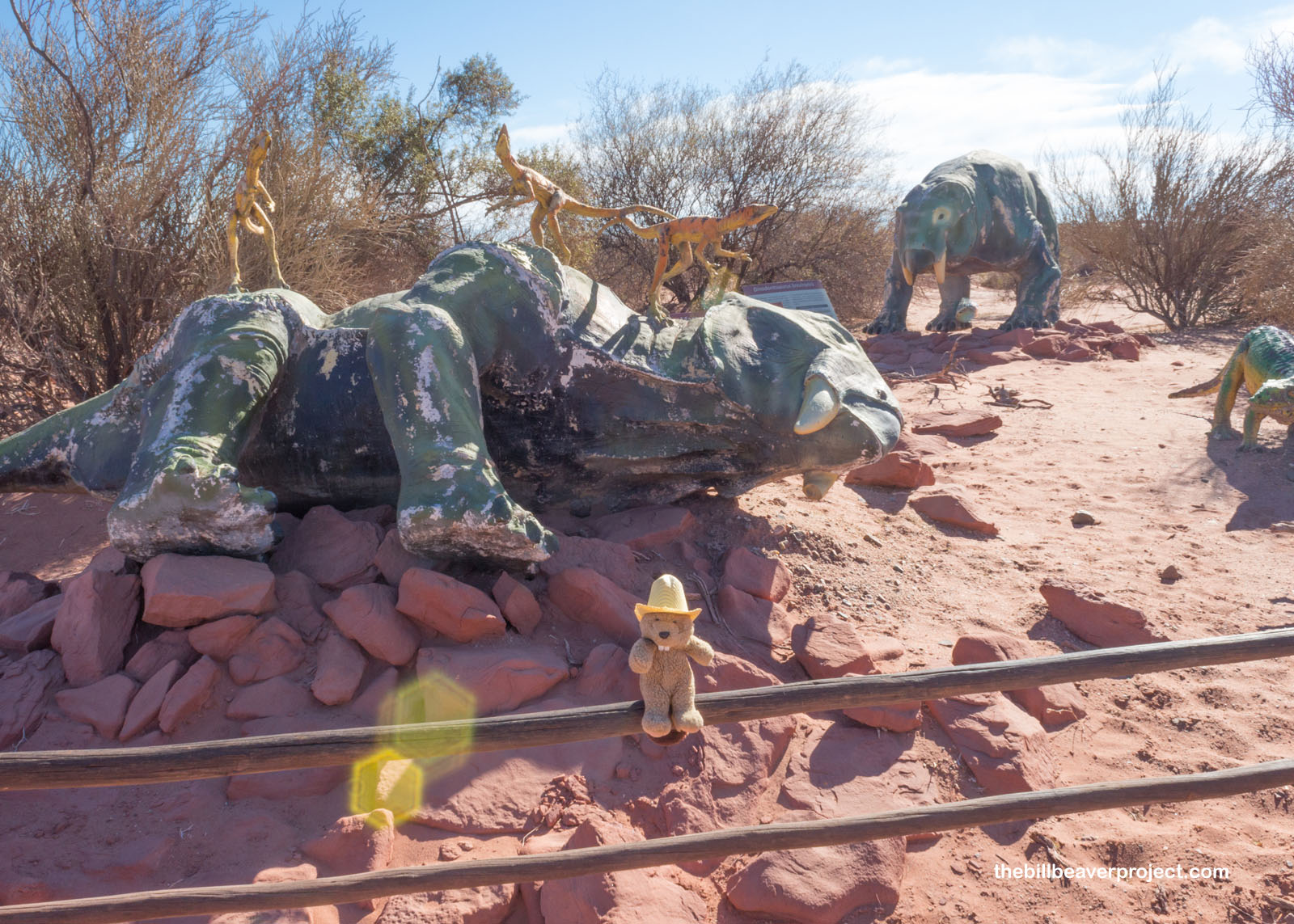 |
Fasolasuchus was definitely an apex predator of the Triassic, getting up to 26 to 33 feet in length! It was one of the largest, and the last, of a type of archosaur called rauisuchians!
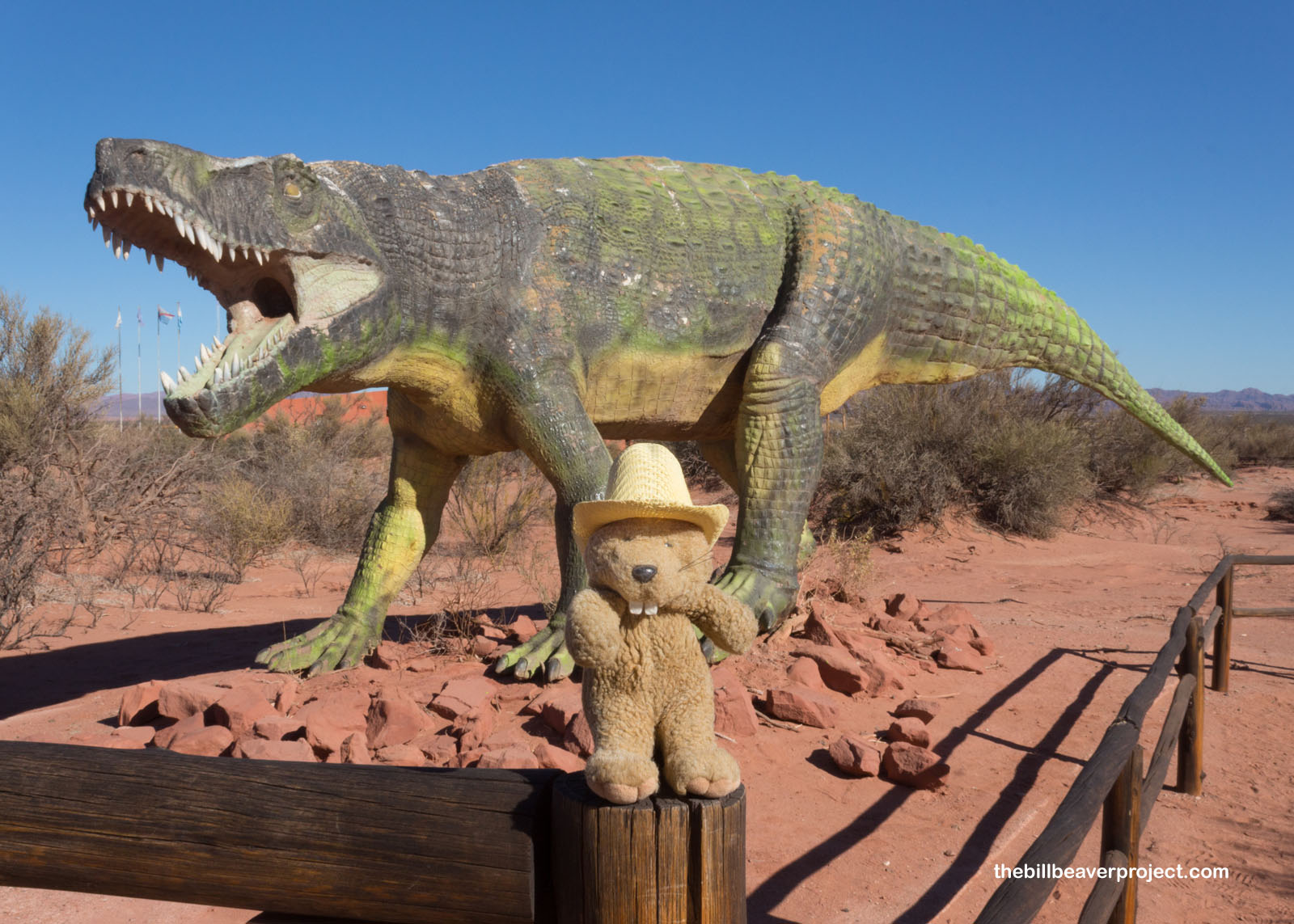 |
At the next stage was a trio of Talampaya’s signature discoveries, Riojasaurus, an ancestor of the giant sauropods of the Jurassic and Cretaceous! Unlike Zupaysaurus, which is mostly known from its head, Riojasaurus was mostly a headless skeleton, which might match a skull found elsewhere!
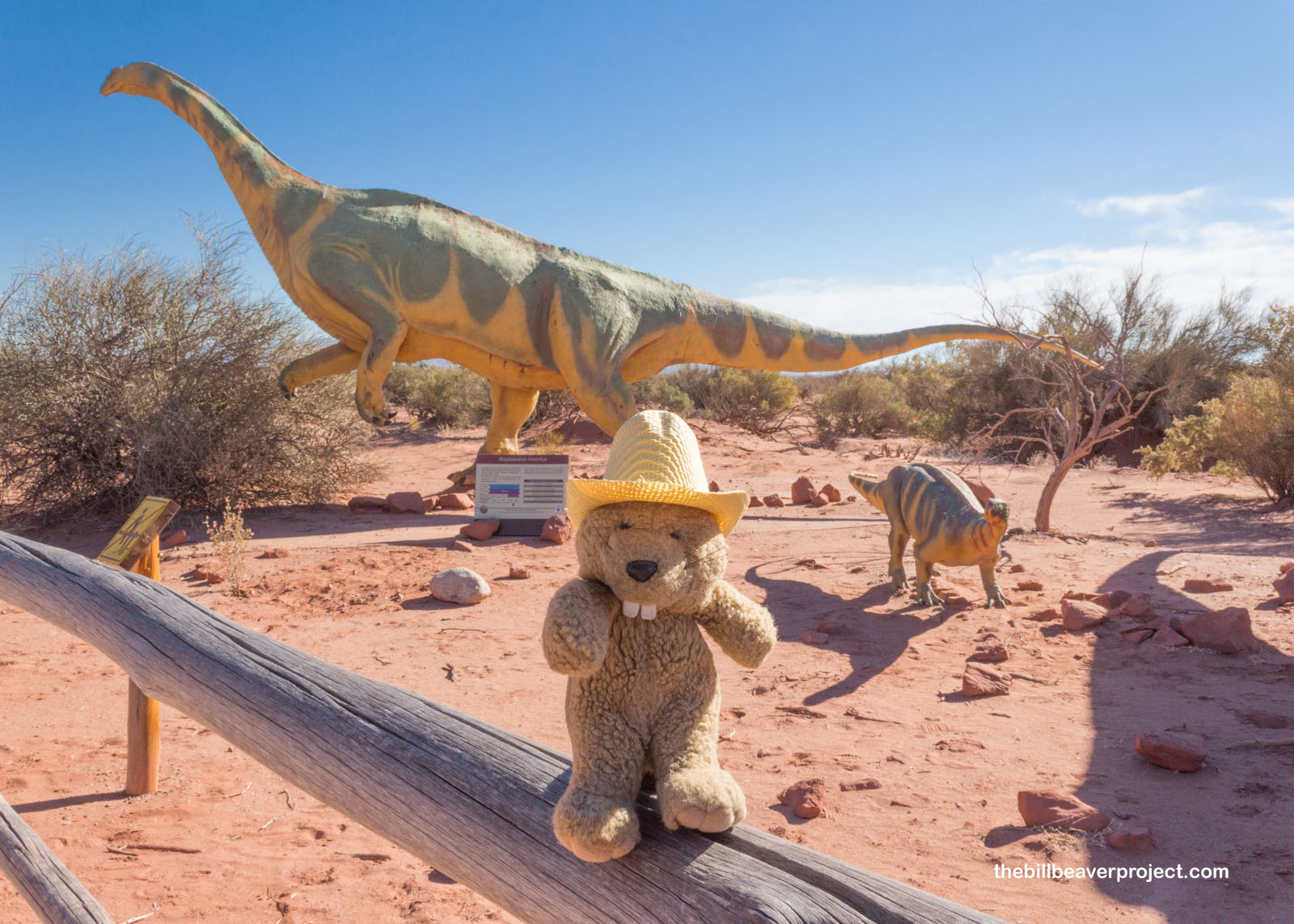 |
The last stop on the Sendero Triásico showed the Zupaysaurus in action, attacking another sauropodomorph called Coloradisaurus! Both known from their skulls, it took an artist a lot of careful calculation and creativity to create this gripping scene!
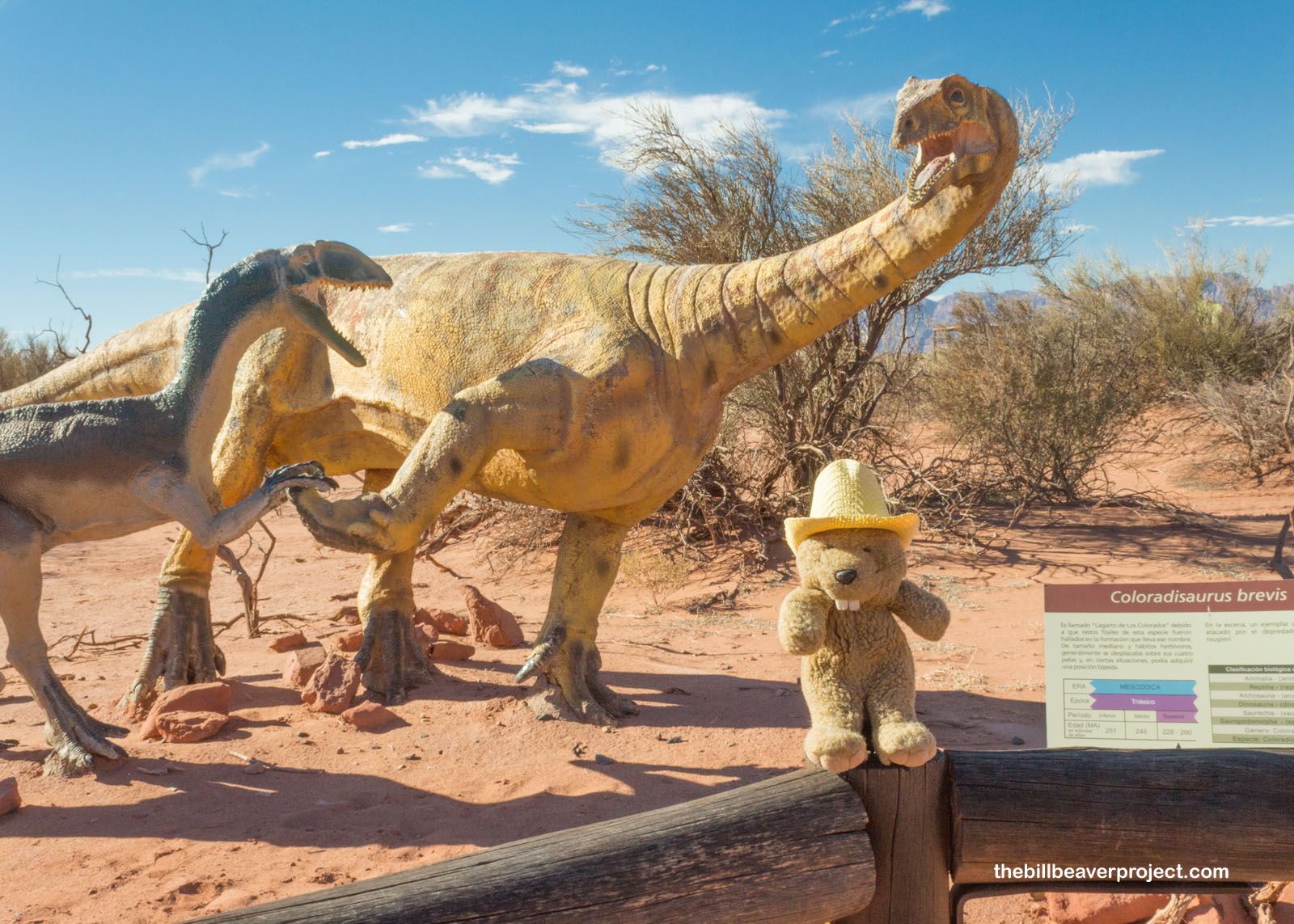 |
At last, it was time for me to hop on the last tour of the day into Talampaya Canyon! I was extra anxious to be on time this go-around, so I was ready and waiting with plenty of time to spare! A small group gathered, and we headed across the red desert into the canyon!
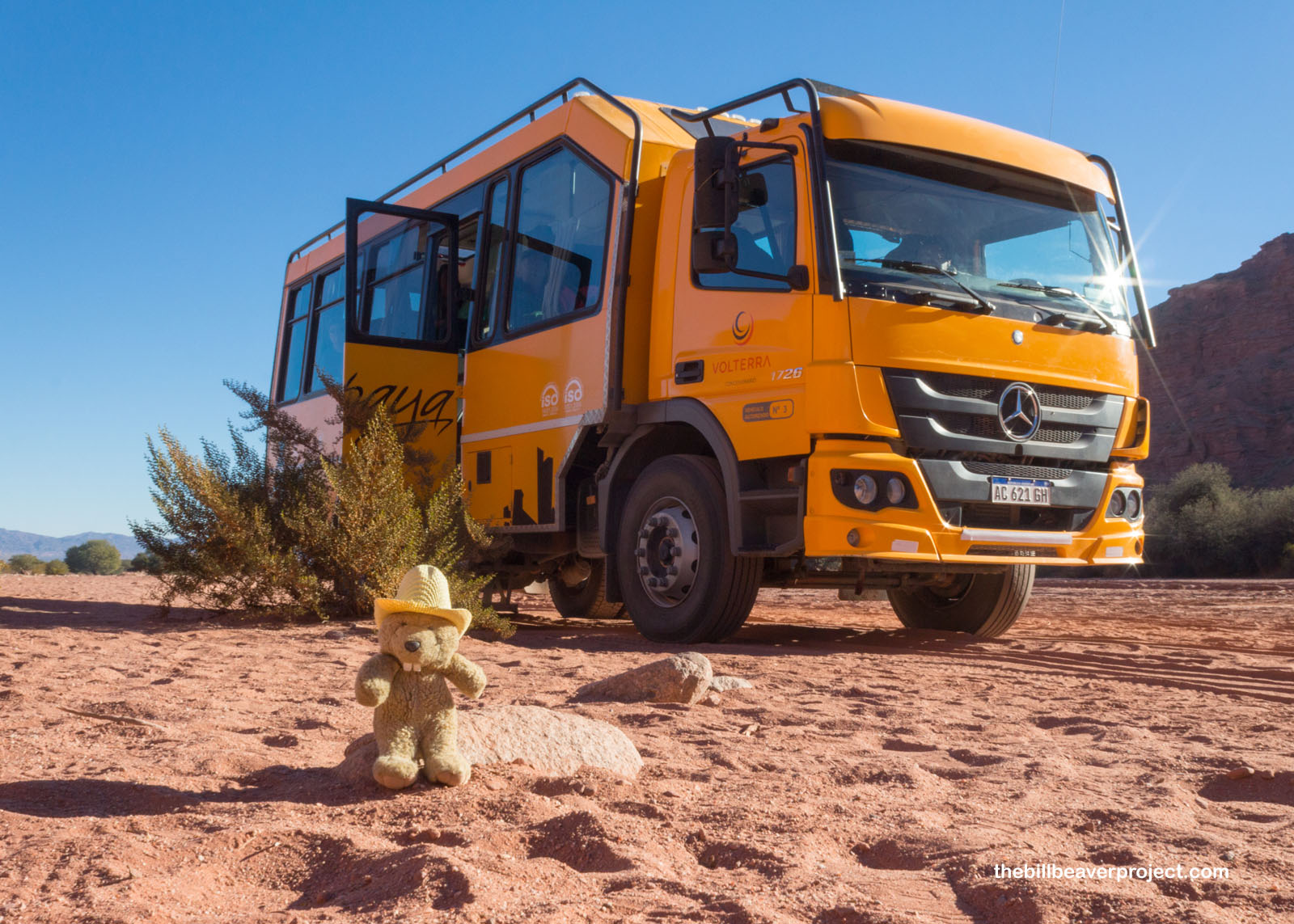 |
Our first stop on the tour was a panel of 1500-year old petroglyphs, probably left behind by the ancestors of the Diaguita, who named Ischigualasto after the moon and Talampaya after a type of hackberry that still grows here! The panels, which were wonderfully free of graffiti, showed early evidence of domesticating guanacos, whose descendants were still wandering the desert here!
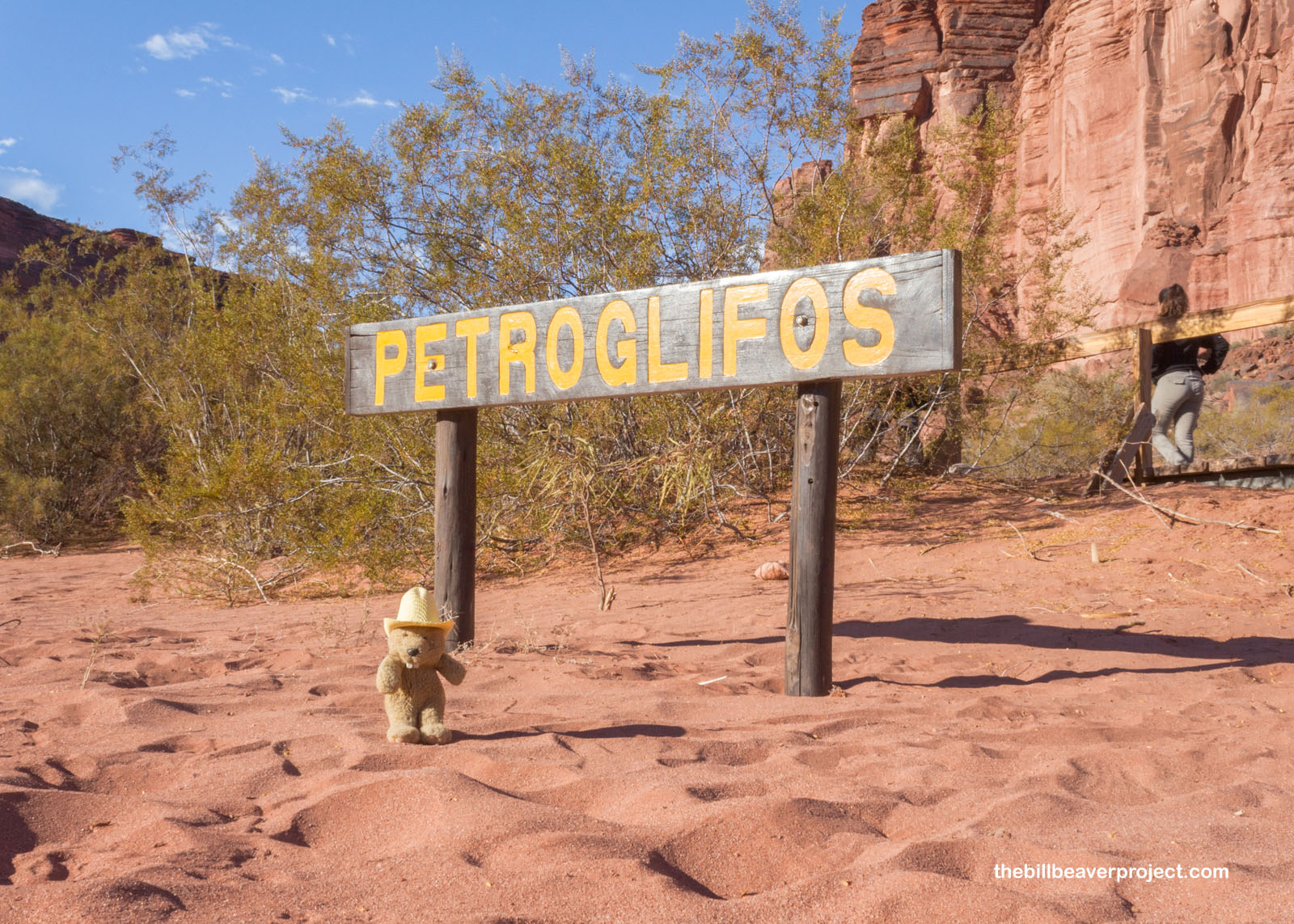 |
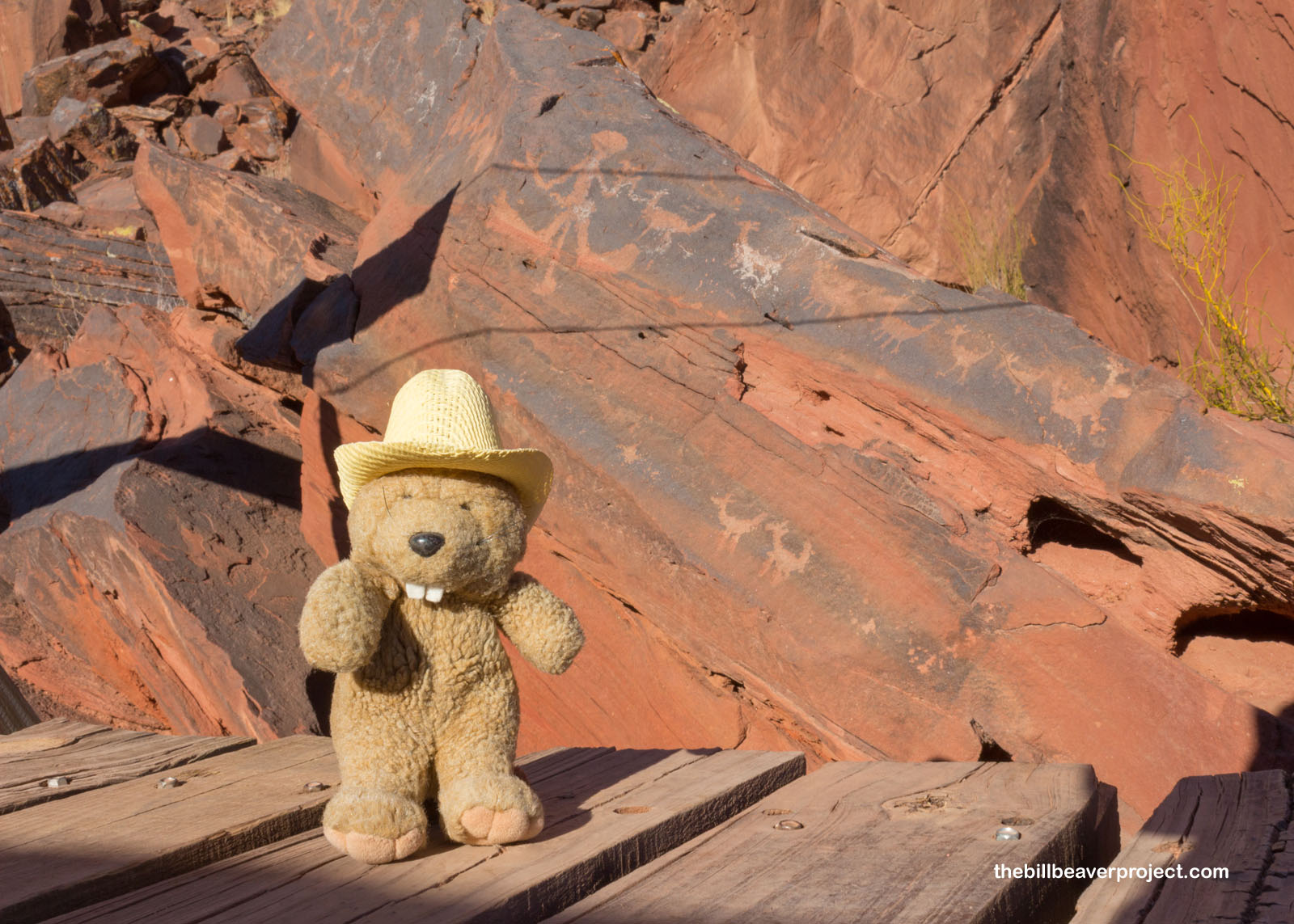 |
The guanacos, relatives of llamas and camels, combined with the towering red cliffs and deep sand, only accessible by tour vehicle, really reminded me of Wadi Rum, where I’d been only a few months before! It’s astonishing how similar two places can be when they’re so far apart from each other!
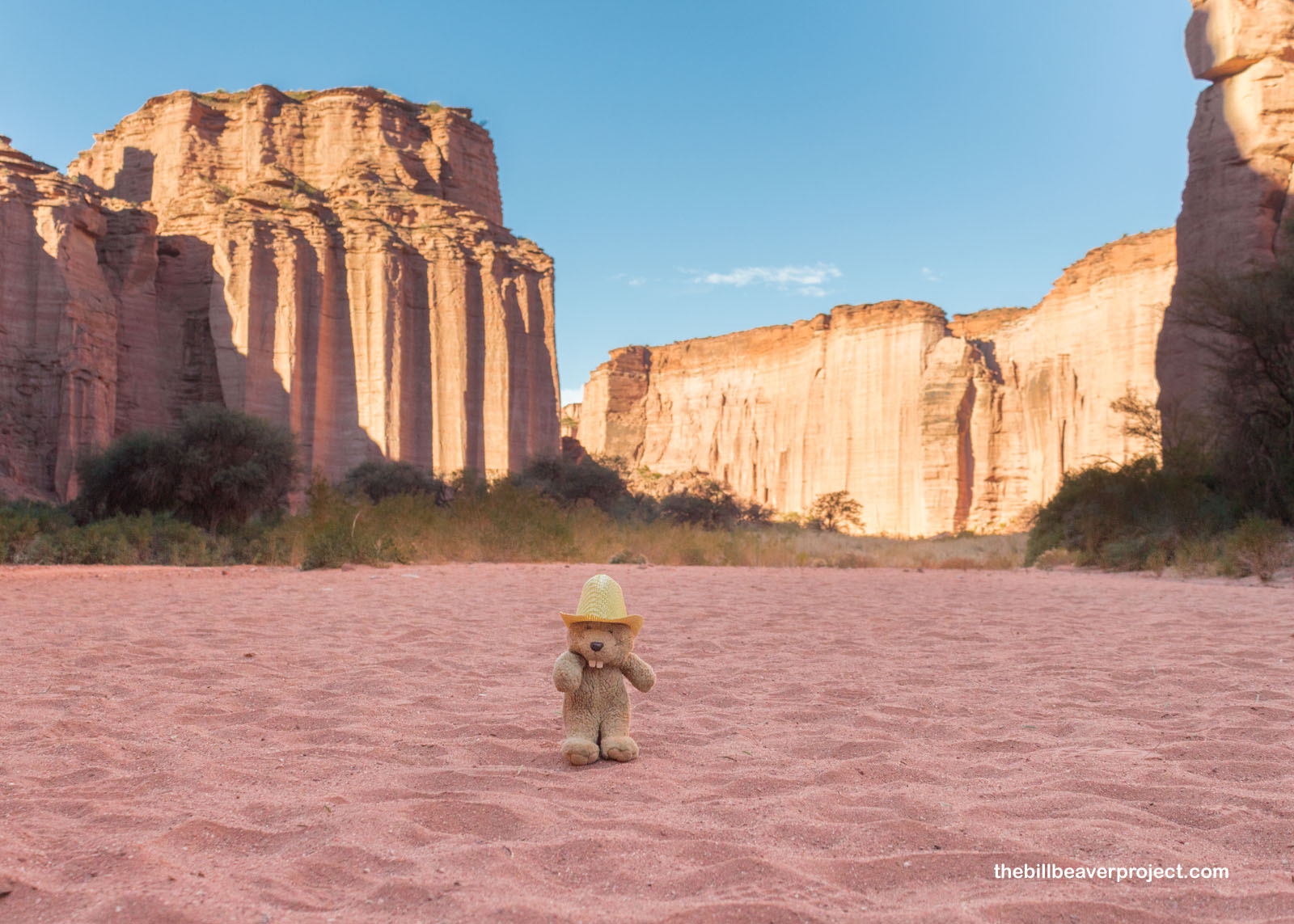 |
At our next stop, we marveled at an eroded channel in the cliff called La Chiminea, or The Chimney, which made some really great echoes across the canyon! We also got a nice surprise on the way out, where a local fellow was handing out free coffee and local walnuts and raisins for folks to try! What service!
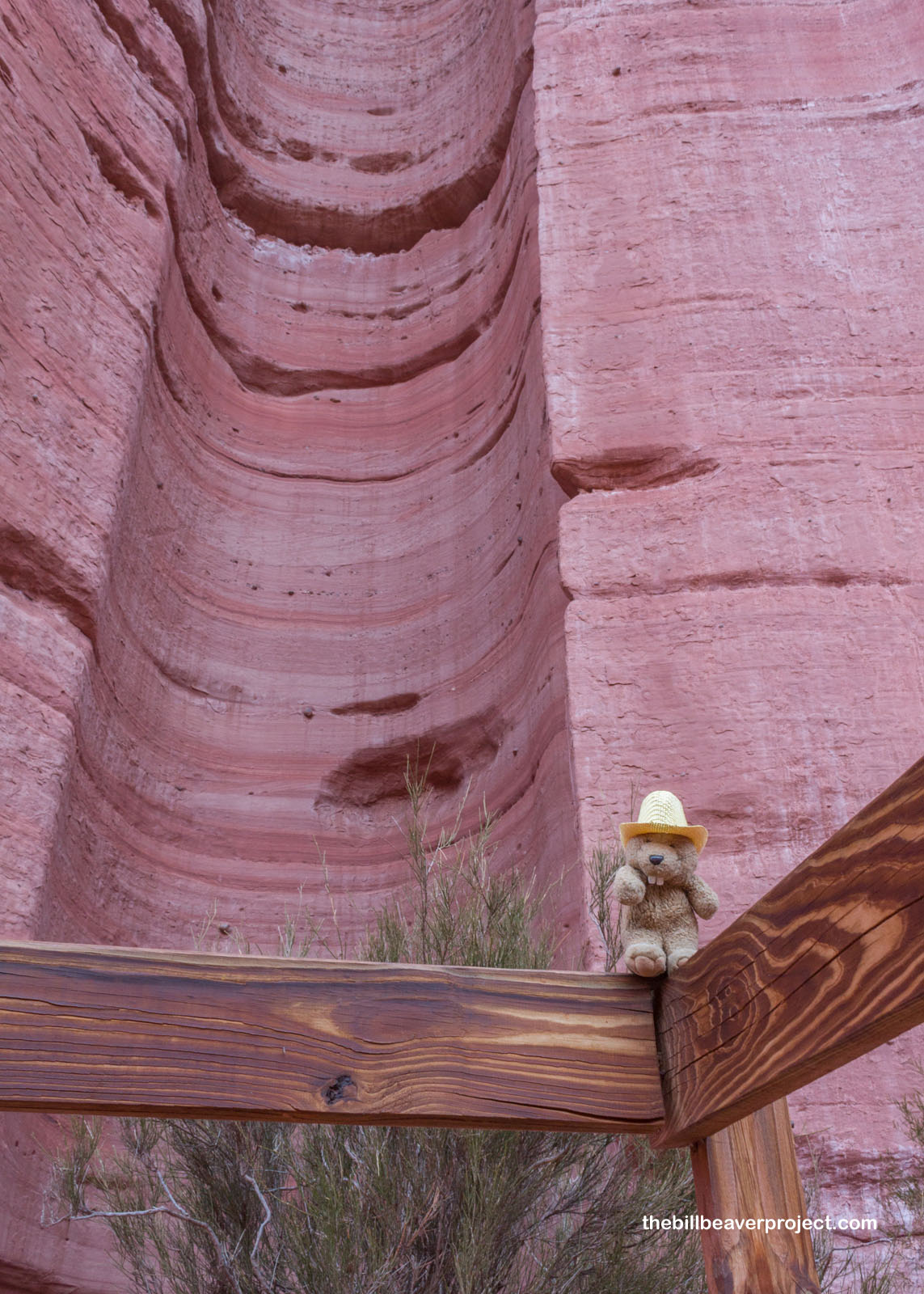 |
We paused briefly in front of a starkly eroded cliff called the Gothic Cathedral just long enough for photos, at which point I realized the tour guides were ready to be done for the day and send us home!
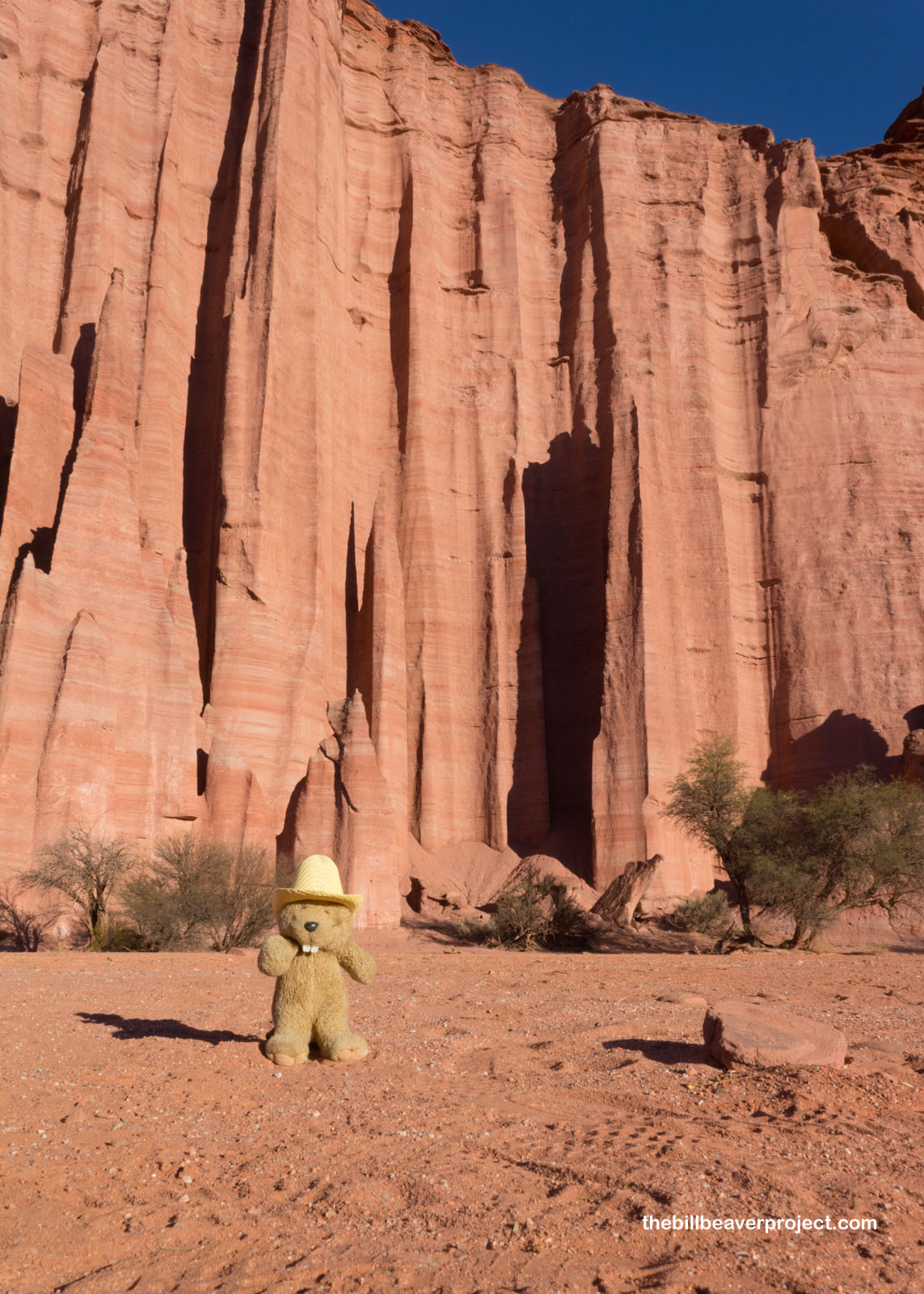 |
We made our last stop in front of two more tall sandstone spires, the Tower and the Totem, and headed off down a boardwalk for one last view of the park’s geology!
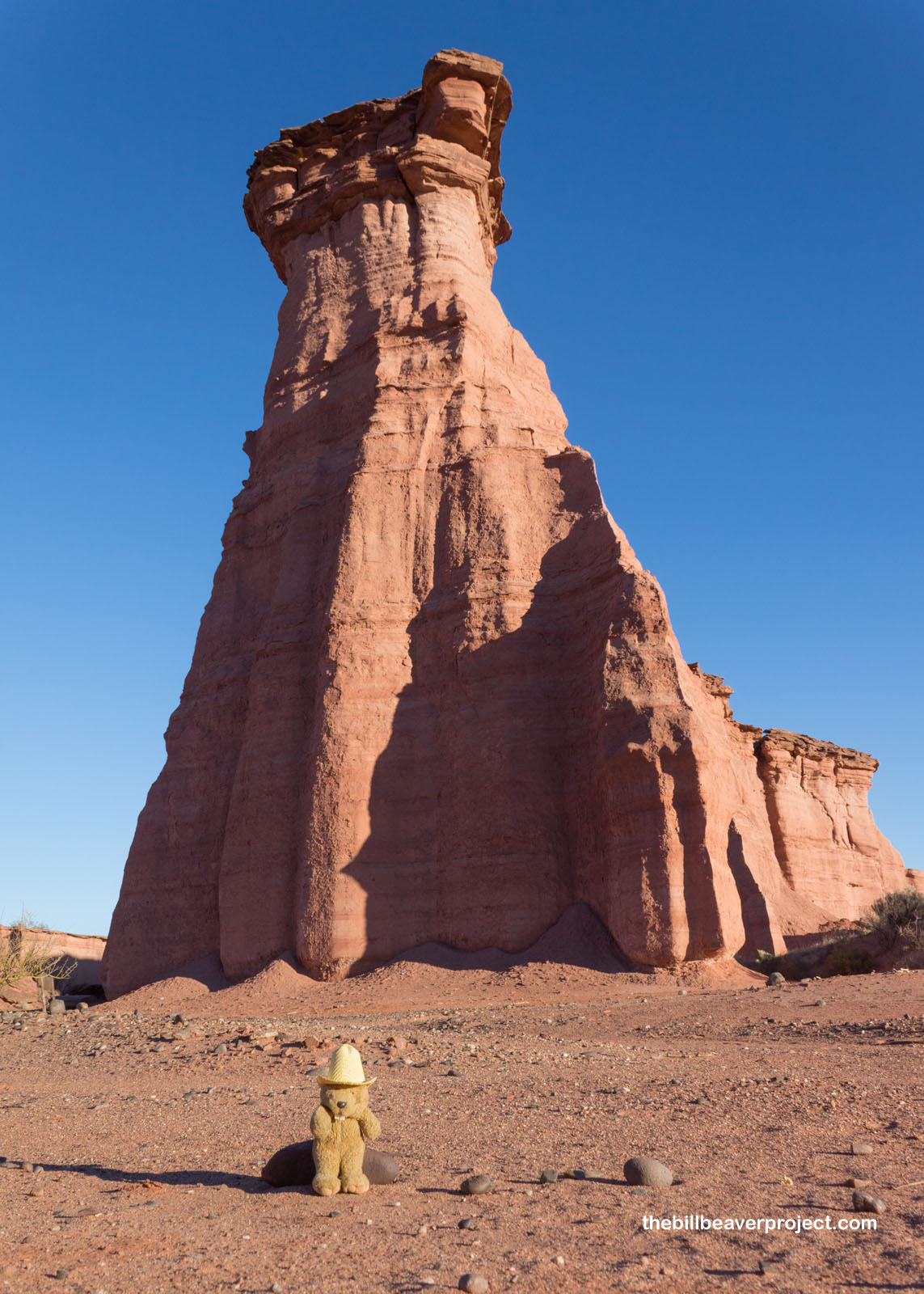 |
Both Ischigualasto and Talampaya have been very controlled tours compared to what I’m used to, but I’m kind of glad for that. I didn’t see any litter along the way, and the petroglyphs and cliffs didn’t have the modern graffiti that tarnishes so many sites in the US. I just wish we’d had more time to explore and enjoy!
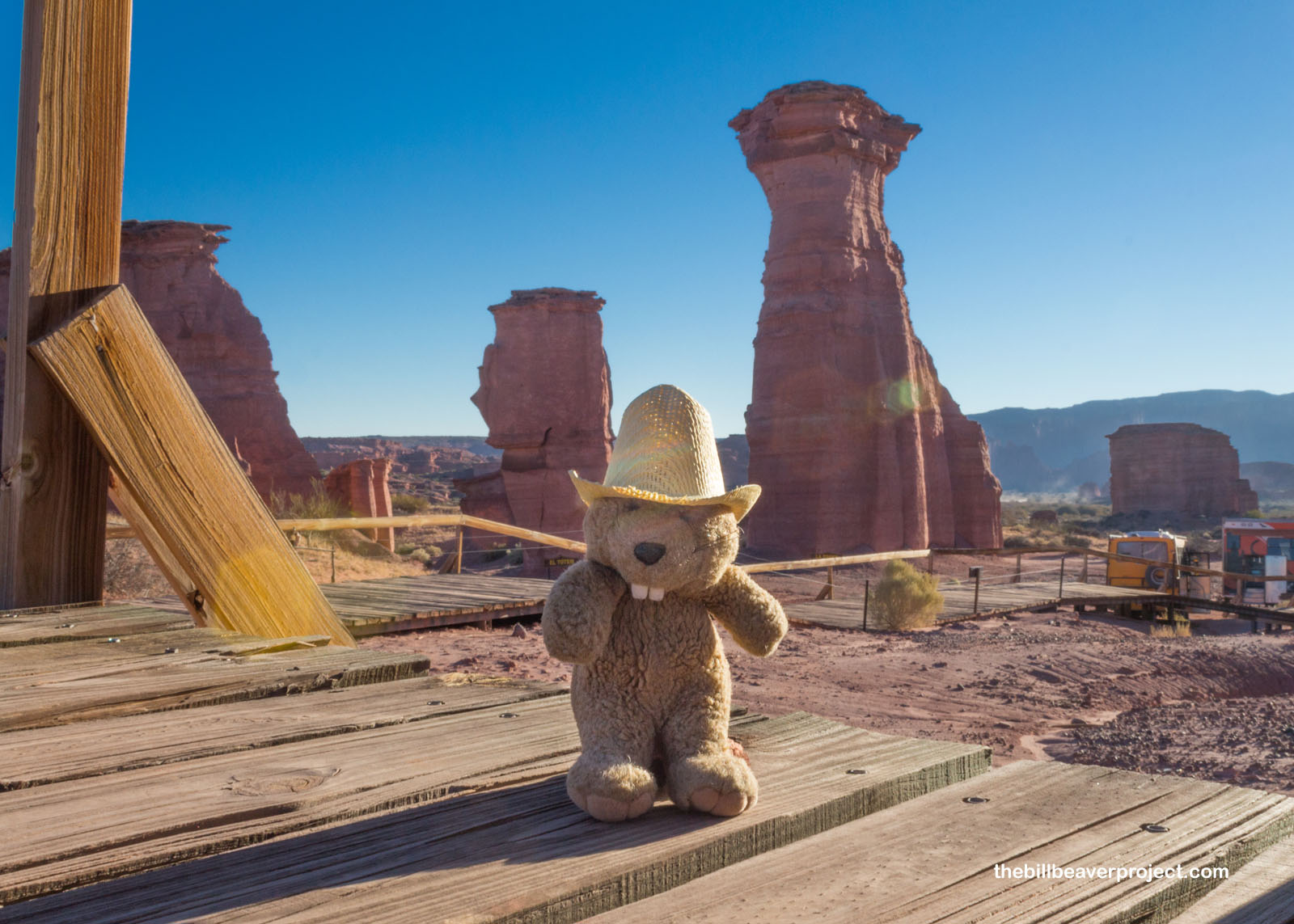 |
At the end of the boardwalk was the final rock formation of the tour, called El Monje, or The Monk! Beyond, the desert stretched out for miles below a cloudless blue sky, which gives me hope for prime weather conditions during the eclipse tomorrow! Booking this ticket was definitely a risk, so I’m hoping it pays off!
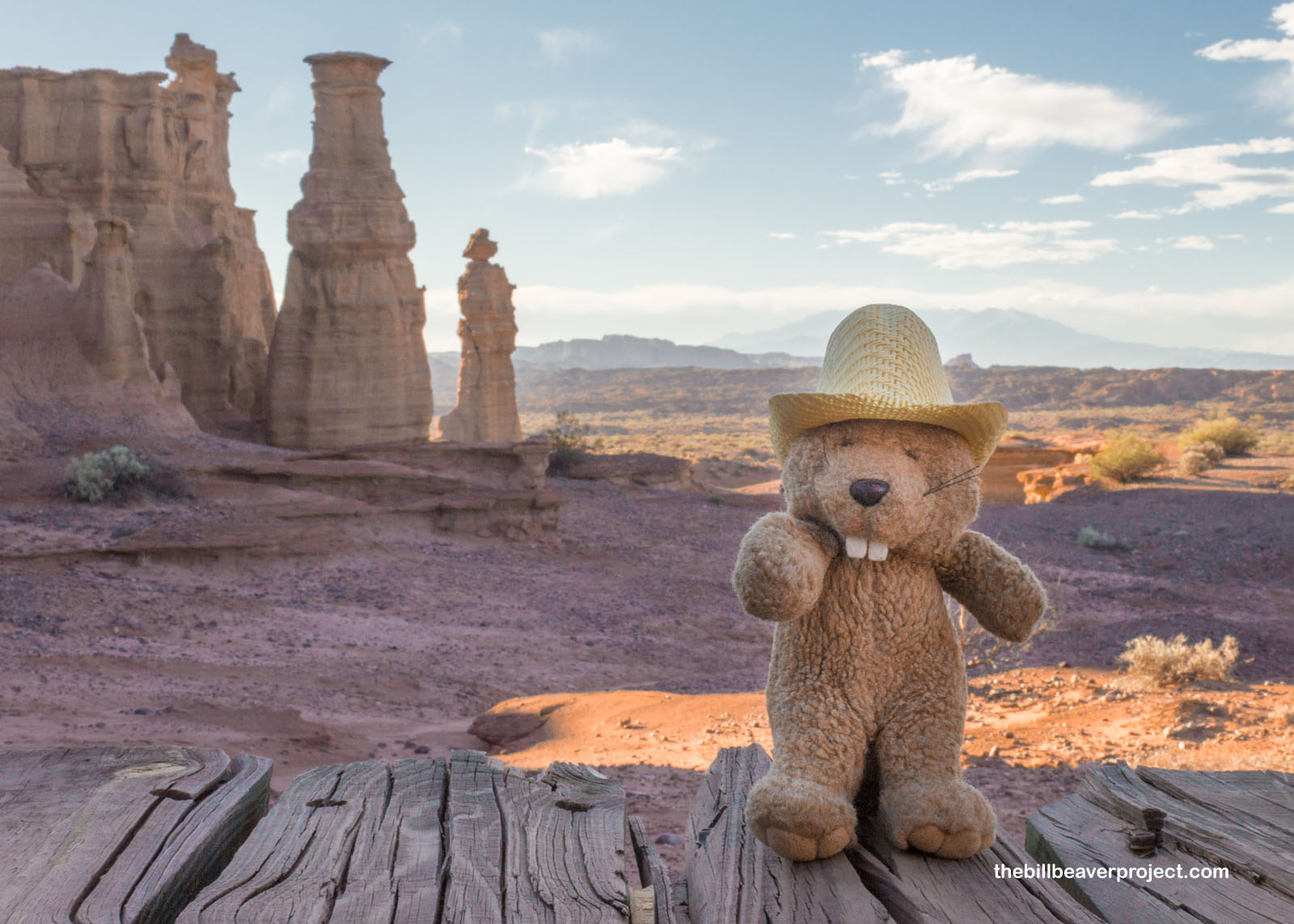 |
The tour concluded around 6:30 with sunset closing in, and I headed back down the darkening road to Patquía. Dinner was much hotter tonight at the 24-hour restaurant, and I was very glad to have such a convenient base for my desert adventures. Now, I just have to figure out what to do tomorrow before the eclipse, which isn’t until 5:40 PM! I guess that’s what makes an adventure great!
¡Buenas noches!

 Previous Day |
Total Ground Covered: 569.8 mi (917.0 km) |
 Next Day |
